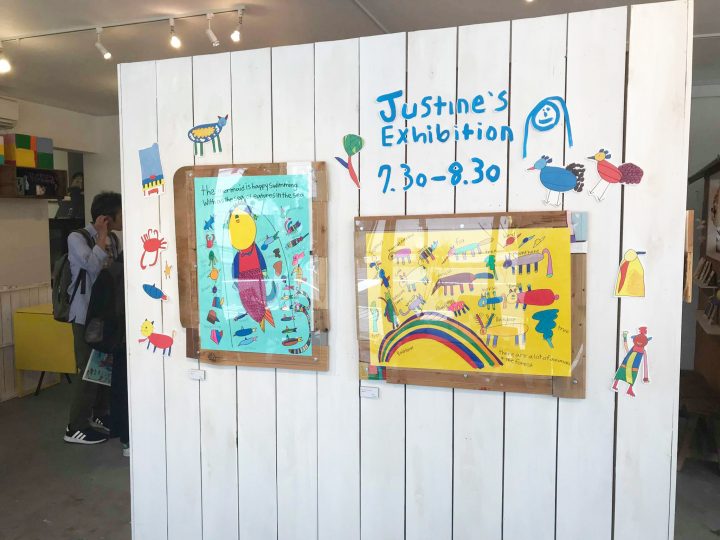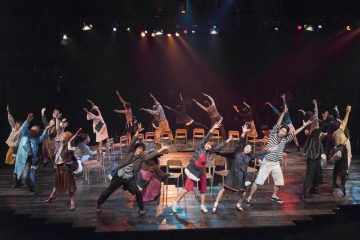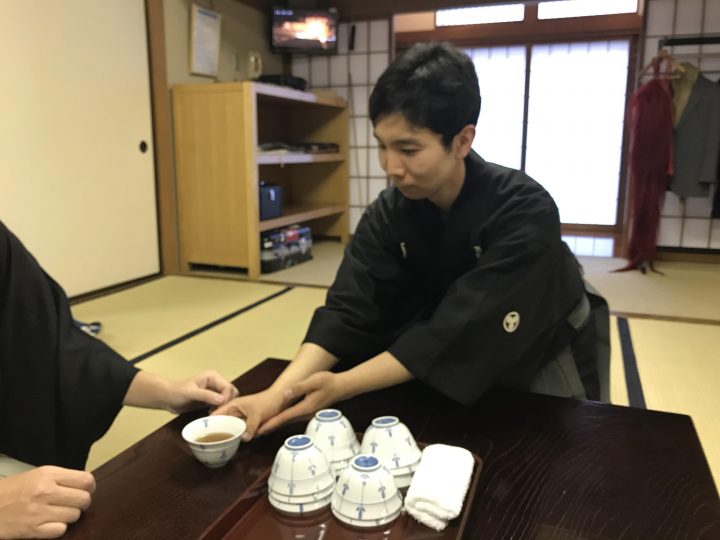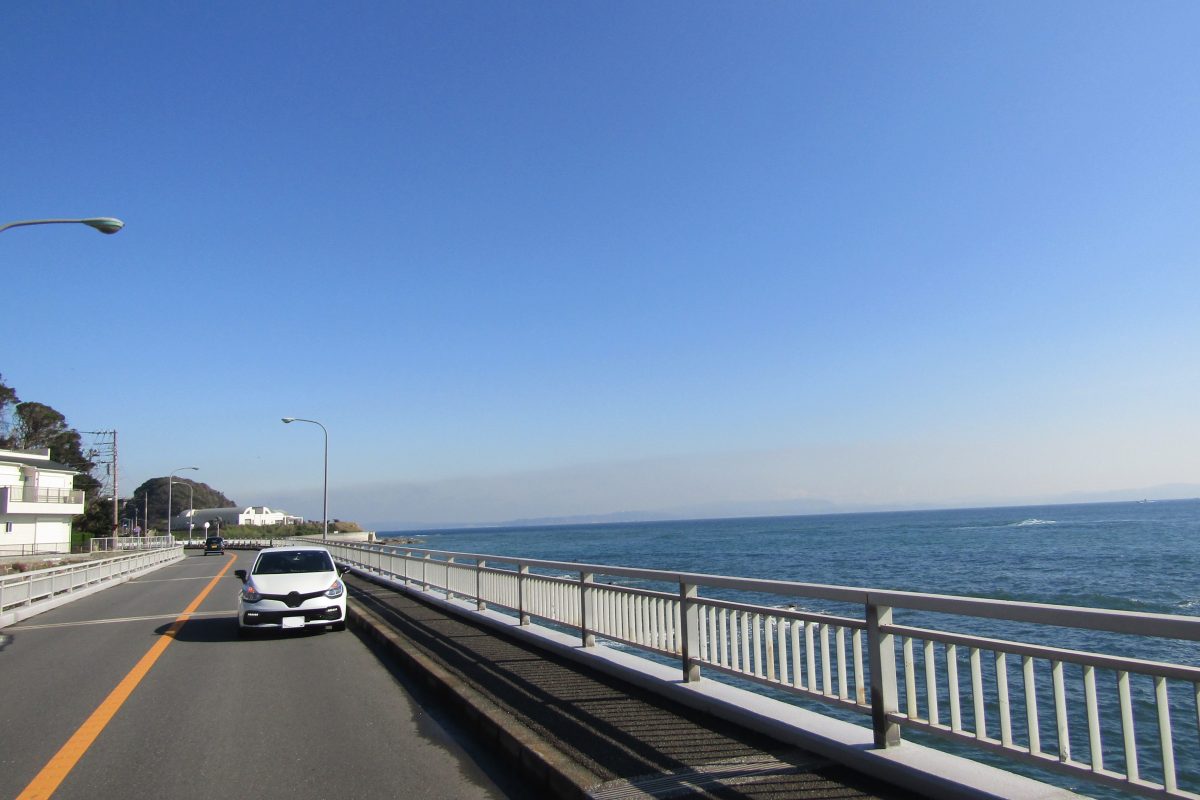
Think the sea is a summer thing?
Certainly, the sea in summer is the best, but the sea in winter seems to have a different, more mature glow to it. It's not as crowded as during the swimming season, and on clear, sunny days you can enjoy a spectacular view of Mt. Fuji.
Therefore.
We've searched for a comfortable driving route that goes around the southern tip of the Miura Peninsula, with Misaki, famous for its tuna, at the center. Why not enjoy an exhilarating drive while praying for good fortune at power spots, as well as cultural and gourmet spots?
*All prices shown in this article include tax.
《This is the route for this trip (car & bicycle)》
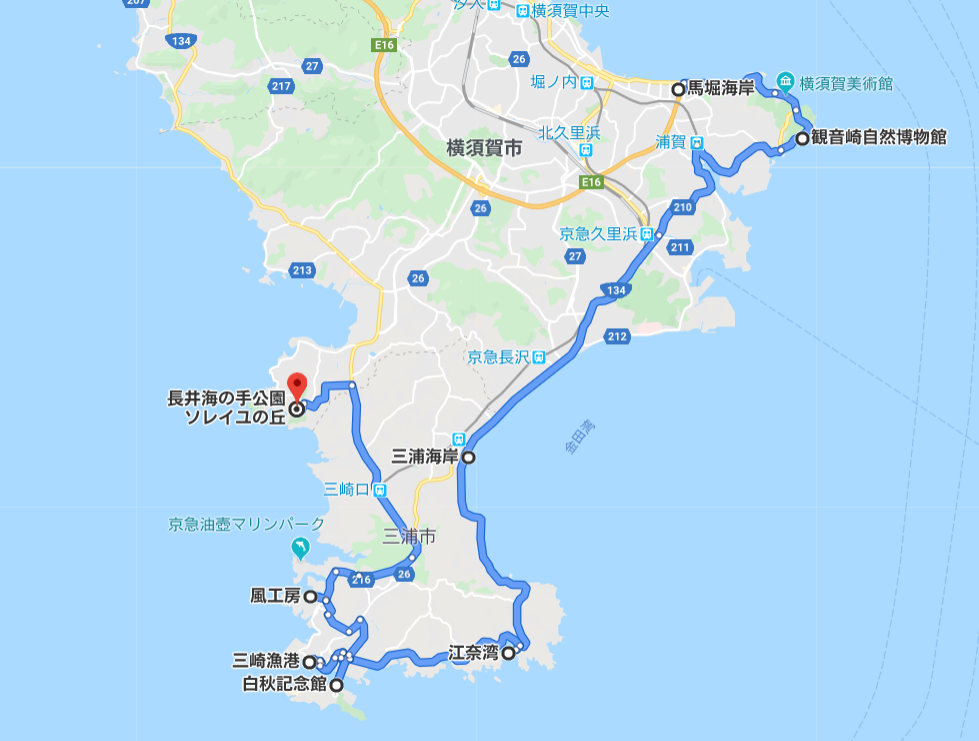
The drive for this day starts from the end of the Yokohama Yokosuka Road, Maborikaigan IC. An exhilarating seaside drive begins right away!
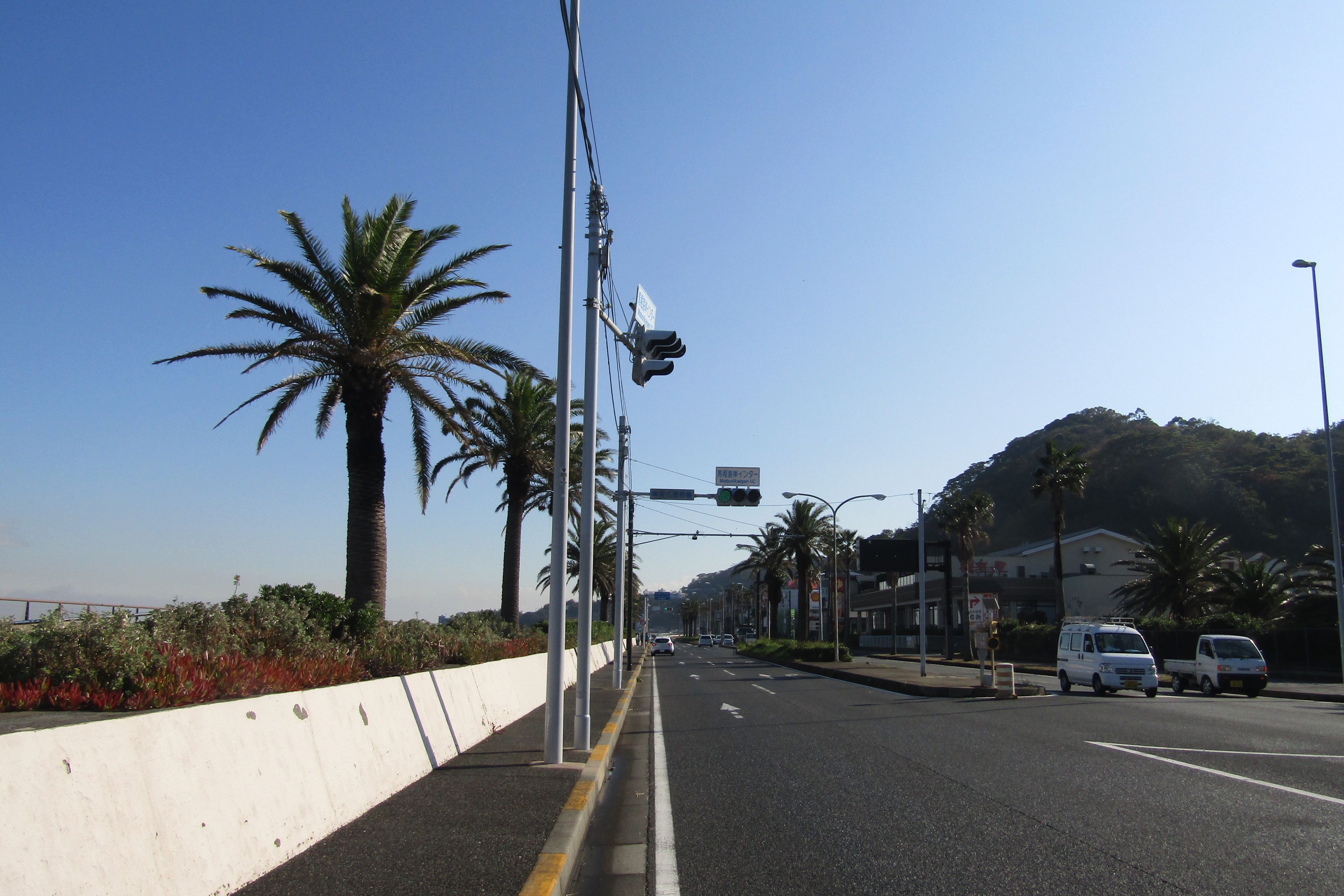
Between the coastline and the prefectural road, there is a promenade that runs from JR Yokosuka Station to Kannonzaki, so even driving on the highway feels refreshing!
Incidentally, the storm surge protection embankment wall in the Mabori Kaigan area (about 700m) is used as an art gallery called "Umikaze Gallery."
Once the two-lane road narrows to one lane, you will see the parking lot for Verny Water, so stop by.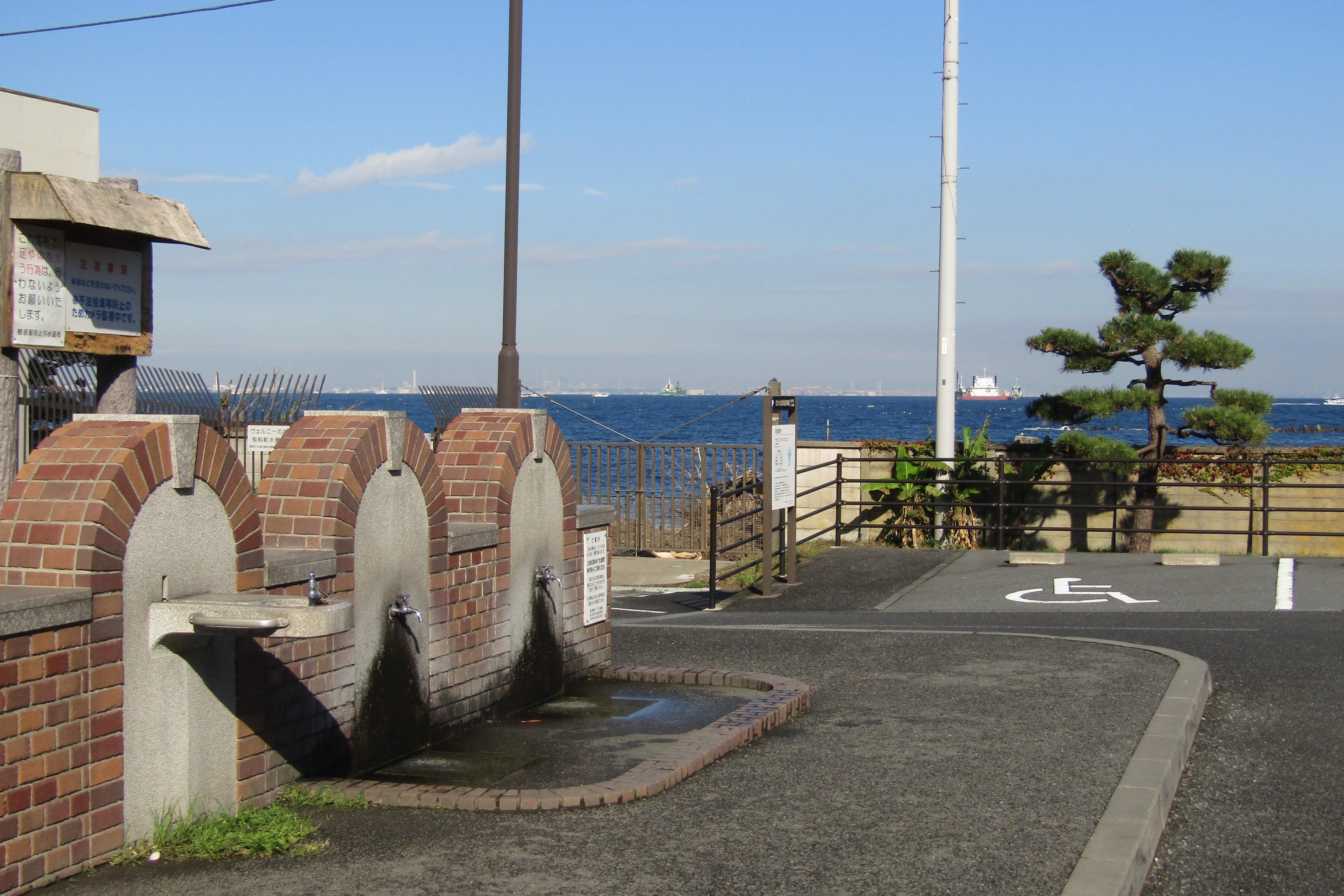
Hashirimizu is Yokosuka City's only self-contained water source, with about 2,000 tons of groundwater available for collection throughout the year. This spring was discovered and drawn from during the time of Francois-Léonce Verny, a Frenchman who was invited to the Yokosuka Shipyard as a shipbuilding engineer at the end of the Edo period, and is still being drawn from without drying up. It is said that the water carried on board ships did not spoil even when they crossed the equator.
*Currently, water from the water source is purified using filtration equipment and disinfected with chlorine in accordance with the Water Supply Act.
Verny's Water
[Address] 1-2-1 Hashirimizu, Yokosuka City
[Regular holidays] Open all year round (except for maintenance and inspection)
Once you pass the entrance to Hashirimizu Elementary School, you will soon see the entrance to Hashirimizu Shrine. The road to the shrine is narrow, so drive slowly so you don't miss it.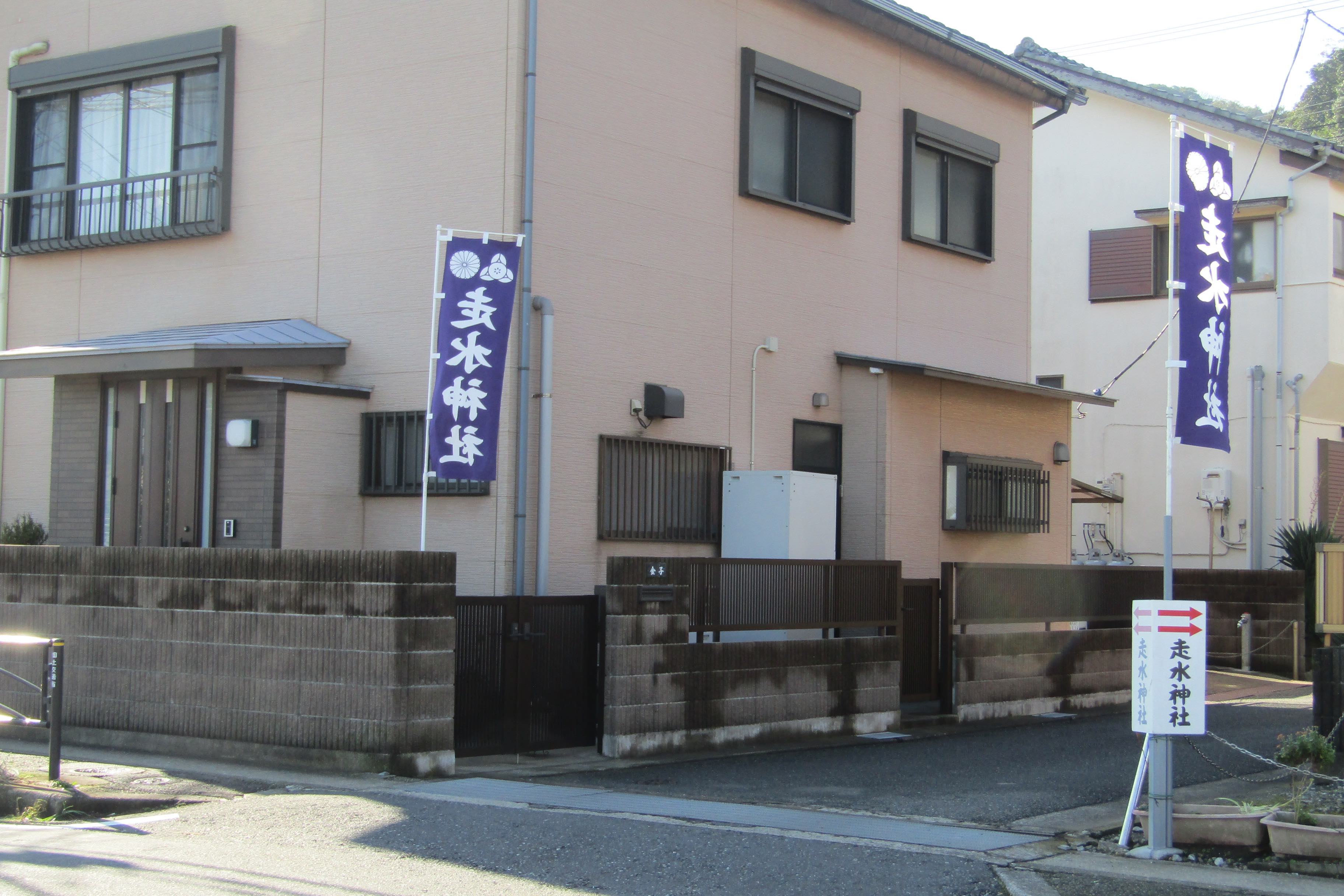
The deities enshrined at Hashirimizu Shrine are Emperor Yamato Takeru and his wife, Princess Ototachibana.
Let us introduce you to the legend surrounding the founding of the shrine.
Emperor Yamato Takeru, who was ordered to carry out an expedition to the east, came to this place with Princess Ototachibana, but was prevented from crossing to Boso by a violent storm. Seeing this, Princess Ototachibana drowned herself to calm the anger of the sea god and ensure the safe voyage.
Due to this legend of love-filled Princess Ototachibana, in recent years Hashirimizu Shrine has been said to bring benefits to women who wish to increase their feminine charm.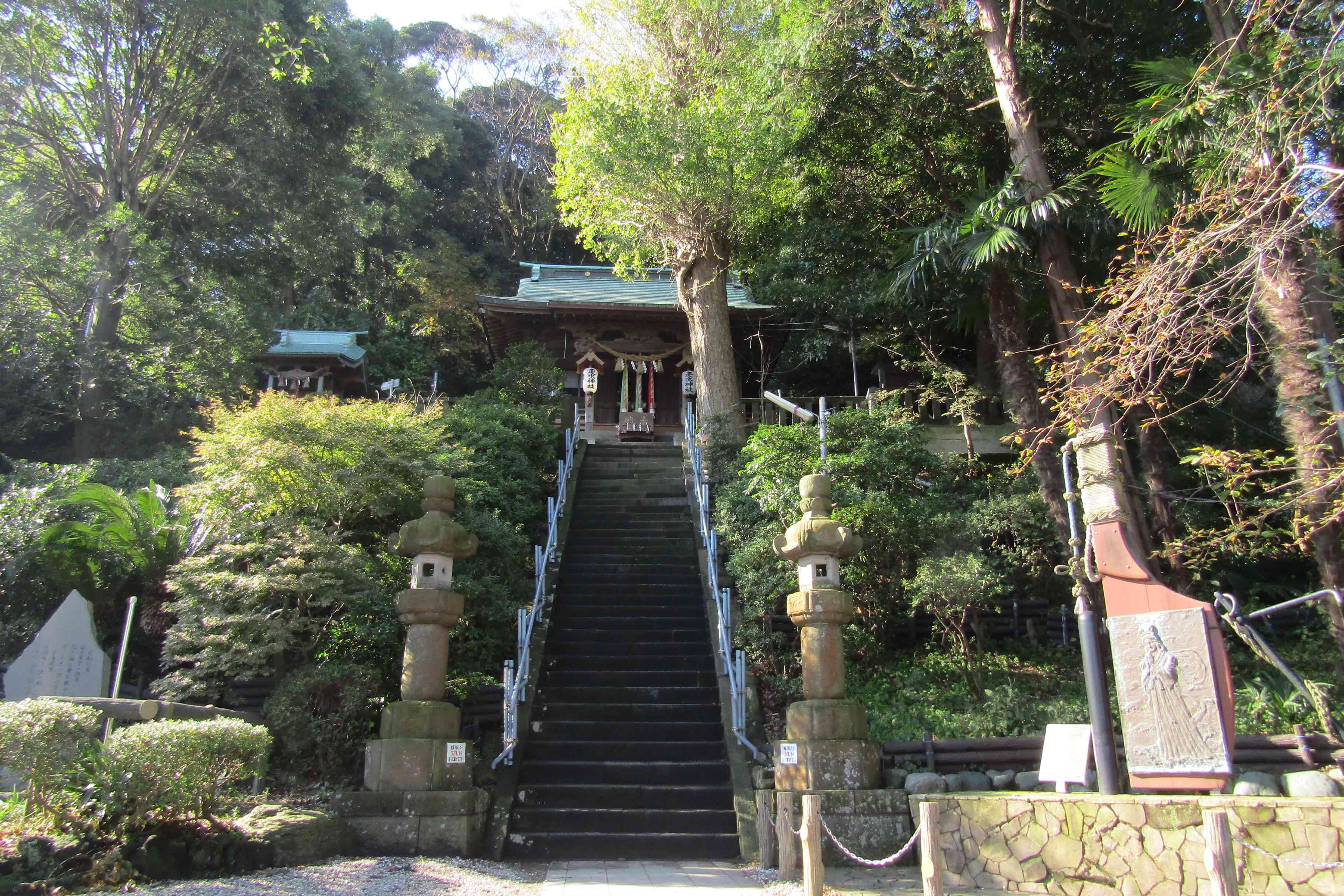
When you climb the stone steps, pray at the main shrine, and look back, you'll see the deep blue sea! Contrary to the legend, it's a very tranquil and beautiful sight.
Pay attention to the "Osamagura" next to the Chozuya!
The sand stored here was brought in by boat from the east coast of Goshogasaki, where the shrine of Ototachibanahime once stood, and is said to bring good luck in finding love... You can take some home with you, and you can get special sand bags at the shrine office.
"Hashirimizu Shrine"
[Address] 2-12-5 Hashirimizu, Yokosuka City
[TEL] 046-844-4122
If you continue driving along the coast, you will see the Yokosuka Museum of Art.
It is surrounded by the lush greenery of the Prefectural Kannonzaki Park, and has a great location with the sea stretching out in front of you. The hotel is also an open space where you can feel the natural surroundings.
The purpose of this day was to drive, so I'll have to wait until next time to view the art.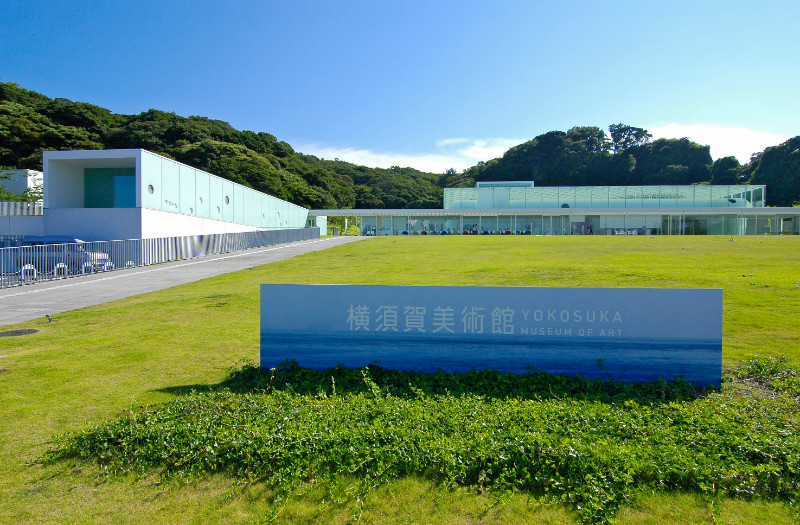
Yokosuka Museum of Art
[Opening hours] 10:00-18:00
[Closed] Wednesdays and Thursdays
[Admission fee] Permanent exhibition/General: 310 yen, High school students, university students, and those 65 and over: 210 yen, Junior high school students and younger: Free. Special exhibitions/Fees vary depending on the exhibition.
[Address] Kamoi 4-1, Yokosuka City
[TEL] 046-845-1211
The restaurant "Aquamare" attached to the museum is an authentic restaurant produced by Chef Yoshimi Hidaka of the Italian restaurant "Aquapazza". It is also open to the public as a cafe, so we enjoyed the exhibition-only collaboration menu on the terrace.
The "Soda no Yume" (650 yen) is a refreshing non-alcoholic cocktail that was perfect for the weather that day, and is associated with the "Taniuchi Rokuro <Weekly Shincho Cover Art> Exhibition: Treasures of Showa," which runs until Sunday, December 15, 2019. The original coaster was very nice, so I drank it without using it.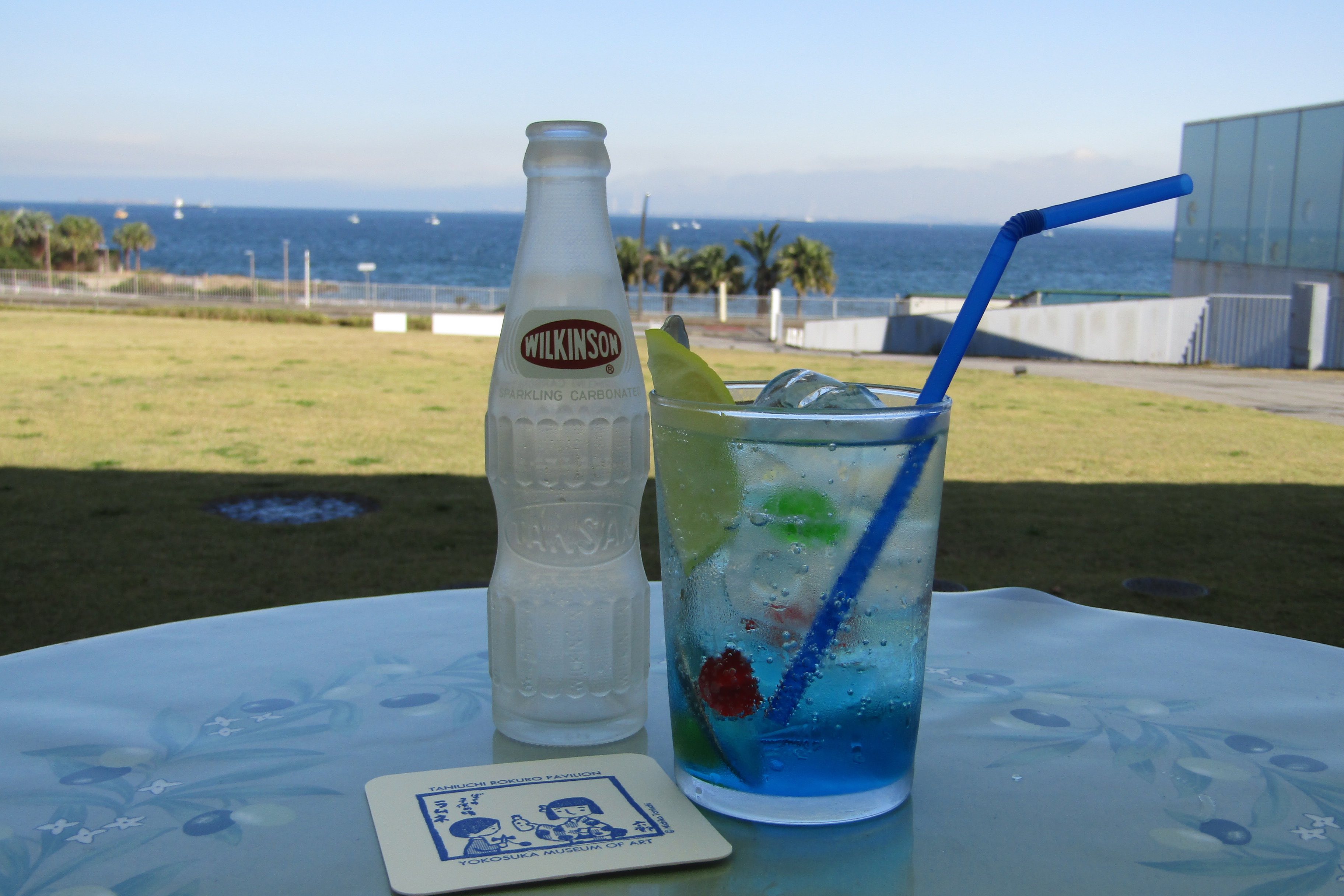
"Aquamare"
[Opening hours] 10:00-20:00 / Lunch 11:00-15:00 (LO) / Dinner 17:00-20:00 (LO)
[Regular holiday] First Monday of every month (open on public holidays)
[Address] Yokosuka Museum of Art, 4-1 Kamoi, Yokosuka City
[TEL] 046-845-1260
After leaving the Yokosuka Museum of Art, turn left at the next traffic light and you will see the Kannonzaki Nature Museum. Kannonzaki, surrounded by a rich evergreen broad-leaved forest and the only rocky coast in Tokyo Bay, is a treasure trove of nature where you can experience its diversity in a real way. The museum conducts research and propagation of rare organisms, and also holds many nature observation events and events for children.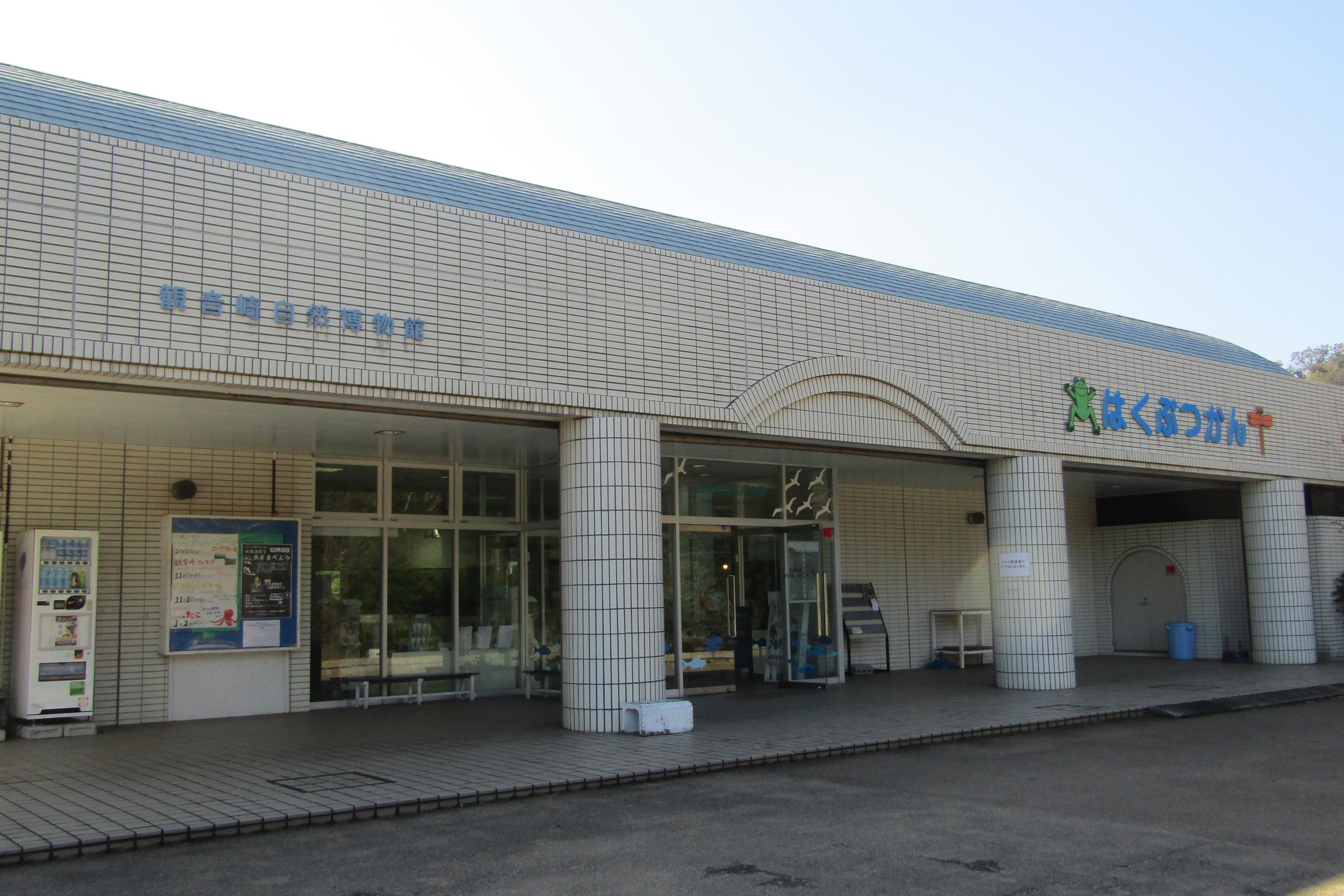
Kannonzaki Nature Museum
[Opening hours] 9:00-17:00 (entry until 16:30)
[Closed] Mondays (or the following day if Monday is a public holiday)
[Admission fee] Adults (16 years and over): 400 yen / High school students: 300 yen / Elementary and junior high school students: 200 yen / Infants (4 years and over): 100 yen *Free for children 3 and under
[Address] Kamoi 4-1120, Yokosuka City
[TEL] 046-841-1533
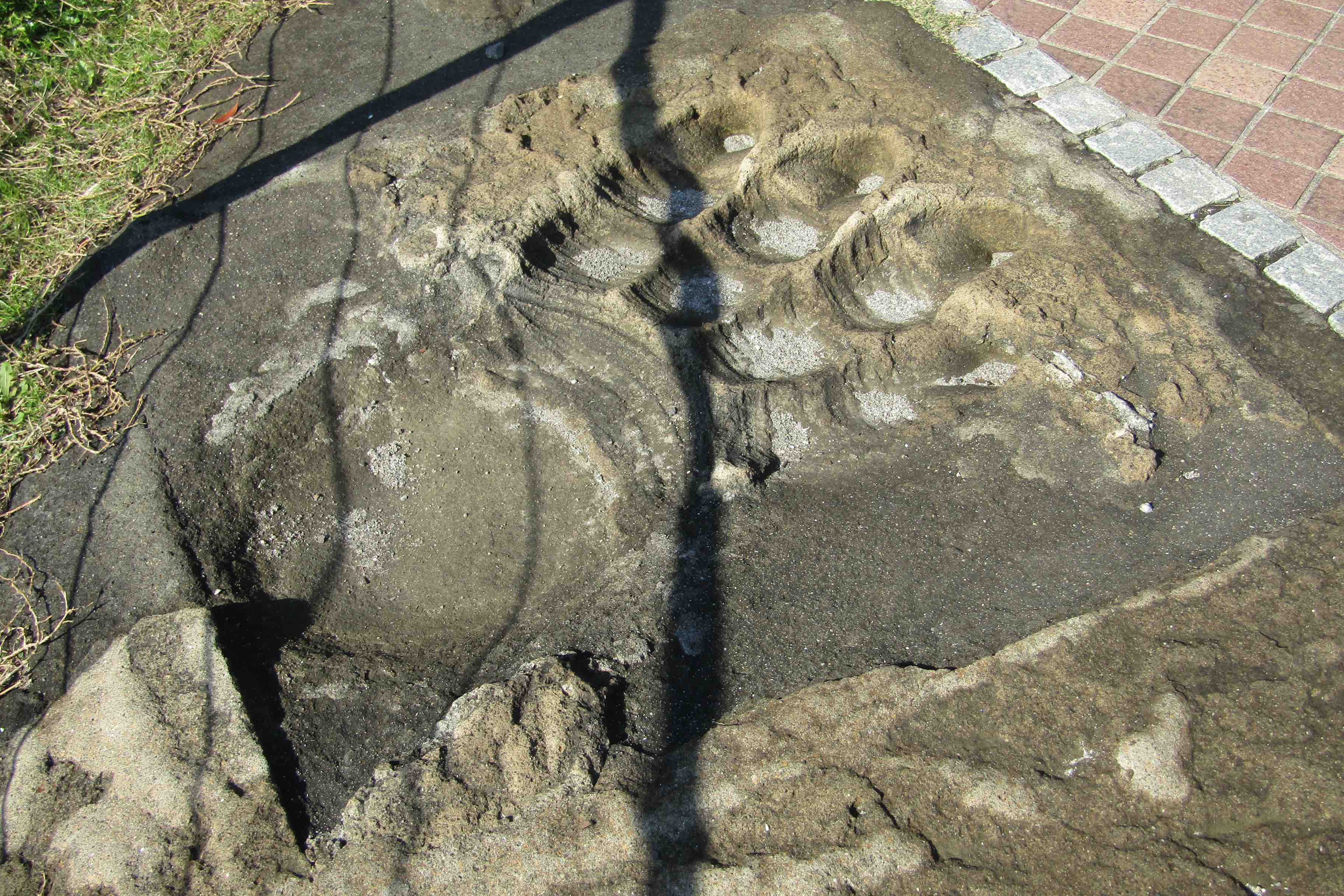
Godzilla's first landing was in Shibaura, Tokyo. However, there is a scene in the movie where it is announced that "Godzilla was spotted in the ocean 15 miles northeast of Kannonzaki, moving northwest!", which led to a rumor that "Godzilla's first landing was at Kannonzaki."
That's why, next to the bus terminal behind the museum, there is a 1/10 scale footprint of the original Godzilla.
Kannonzaki Park, rich in nature, is the perfect place to enjoy a leisurely stroll while watching the ships passing by on the sea.
The gently curving coastal roads make for a pleasant drive!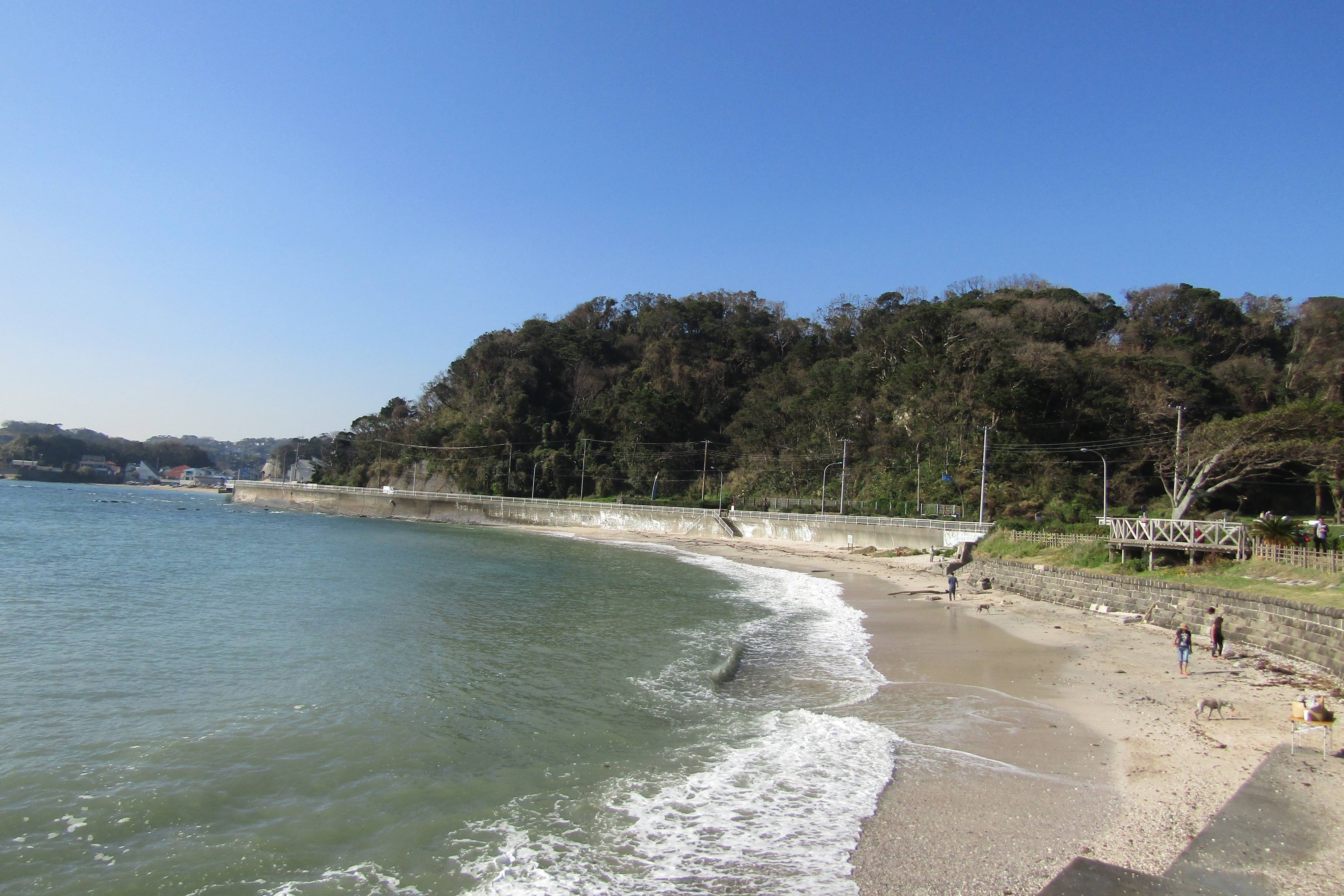
After driving away from the sea for a while, turn left at the traffic light in front of Uraga Station. As you drive past Uraga Dock, you'll see a small ferry. This is the Uraga Ferry, a symbol of Uraga!
It has a long history, having started around 1725 as a means of transport between the towns of Uraga, which are separated by a port. There is no timetable, and when a ferry is on the other side, you can press a call button and they will come to pick you up; it's a simple form of transportation.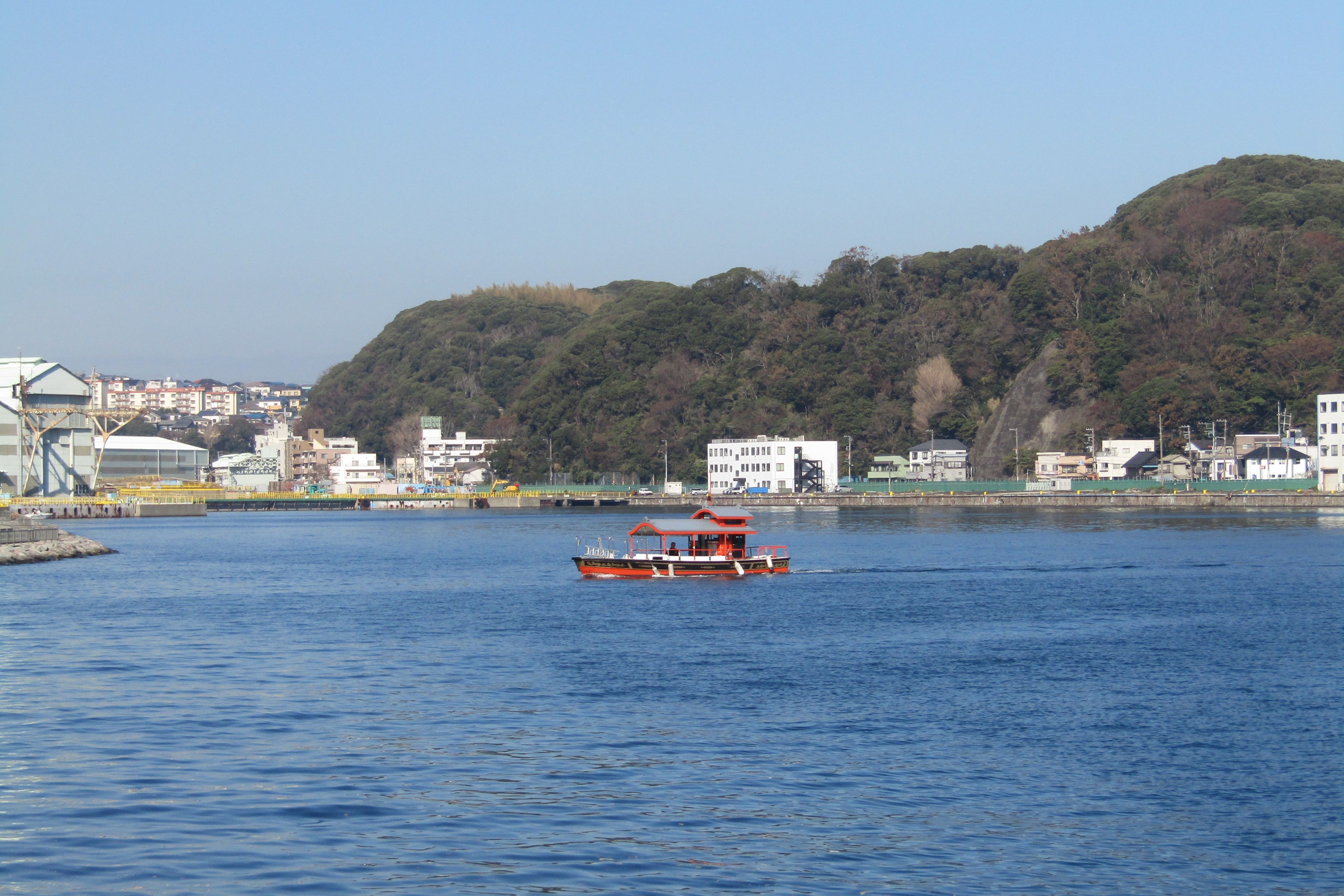
Uraga Ferry
[Business hours] From 7:00 to 18:00
[Closed] December 31st to January 3rd *Closed during bad weather or ship inspections
[Fee] Adults: 200 yen, Elementary and junior high school students: 100 yen, Children under 1 year old: Free, Bicycles etc.: 50 yen
[Address] East Ferry Terminal: 2-19-10 Higashi-Uraga, Yokosuka City, West Ferry Terminal: 1-2-19 Nishi-Uraga, Yokosuka City
Once you get onto National Route 134 from around JR Kurihama Station, you will finally arrive at Miura Beach.
The sea is a bustling swimming beach in the summer, but in the winter it is quiet and the long sandy beach is pleasant!
And then I saw something strange... What is that?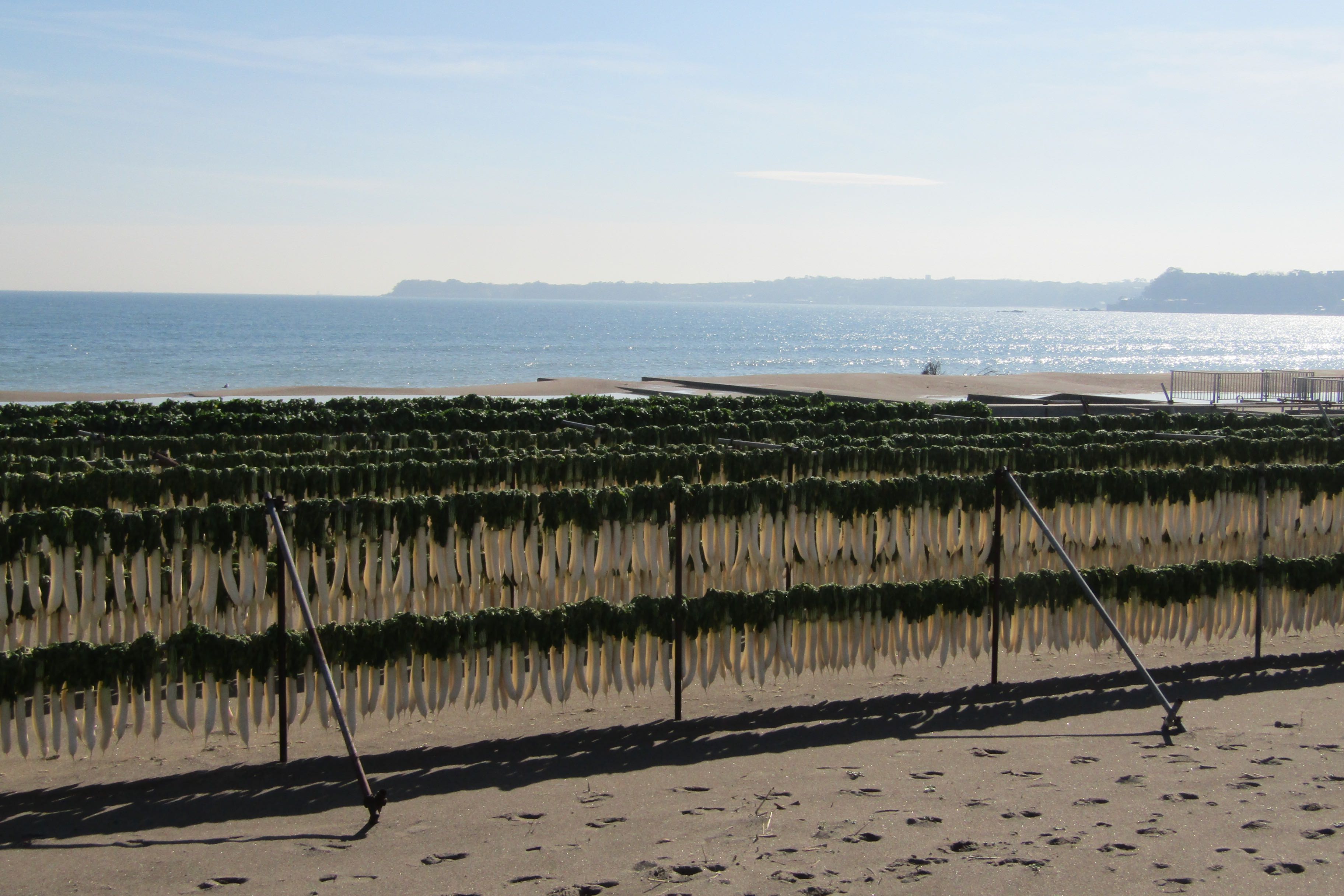
Yes, this is the "dried radish" that is a winter tradition at Miura Beach.
This is the drying of radishes in order to make Takuan, a specialty of Miura city, and it is a spectacular sight that has been selected as a Miura scenic asset!
Radishes dried in the sun on the beach apparently lock in all of their flavor, making for a delicious takuan.
Wanting to drive a little further along the coastline, I turned left at the traffic light at Miura Beach and onto Prefectural Route 215.
From here on, the scenery of the open Miura Coast changes completely, and you will be driving on a road with many ups and downs, alternating between hills and small fishing ports. The road is generally one lane on each side with a center line, but there are many narrow places, so please drive with care.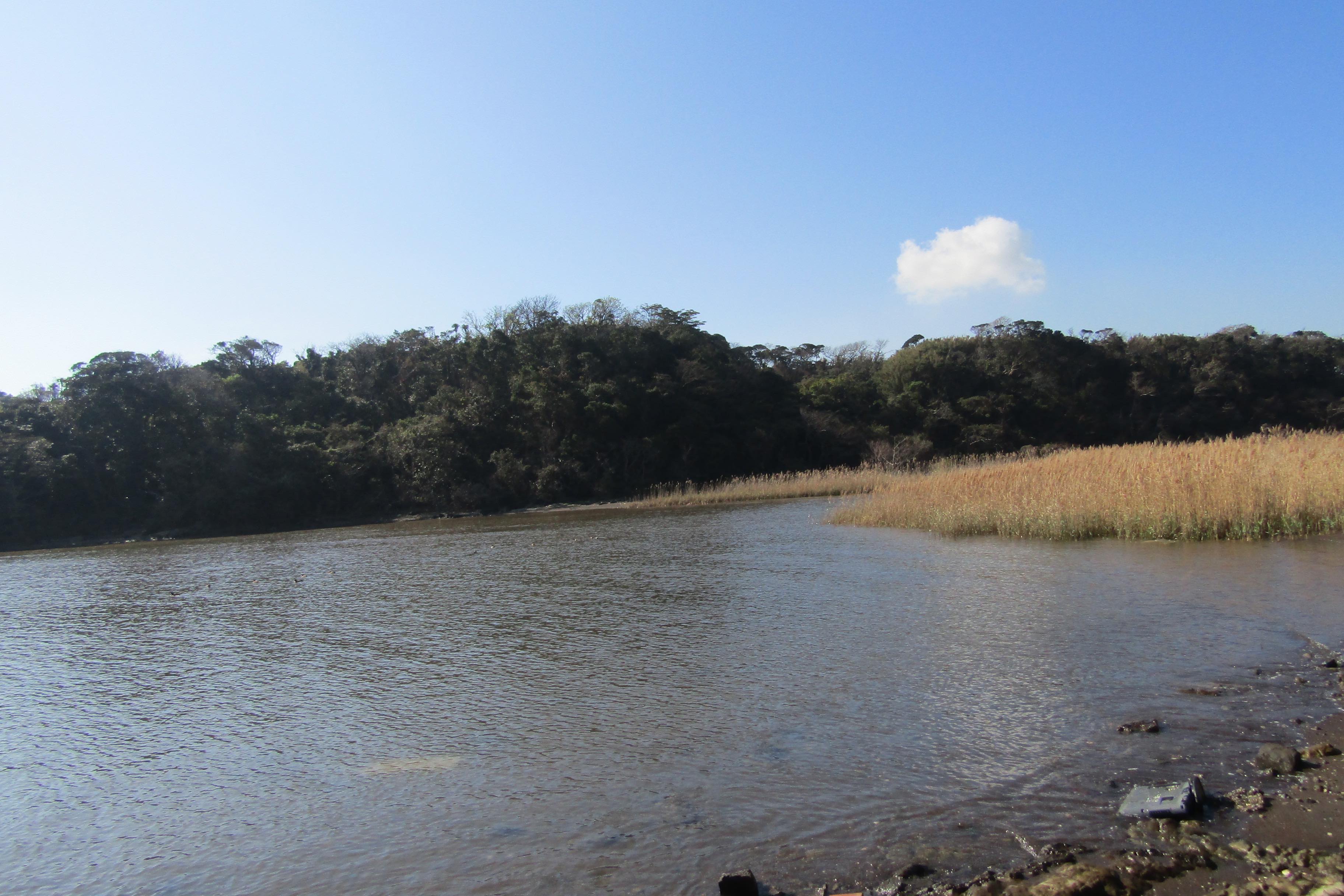
There are apparently three tidal flats on the Miura Peninsula, and one of them, the Ena Bay tidal flats, came into view.
The reed colonies on both sides of the three small rivers that flow into the area are a treasure trove of creatures, including crabs, and are also a place where migratory birds arrive from autumn to winter.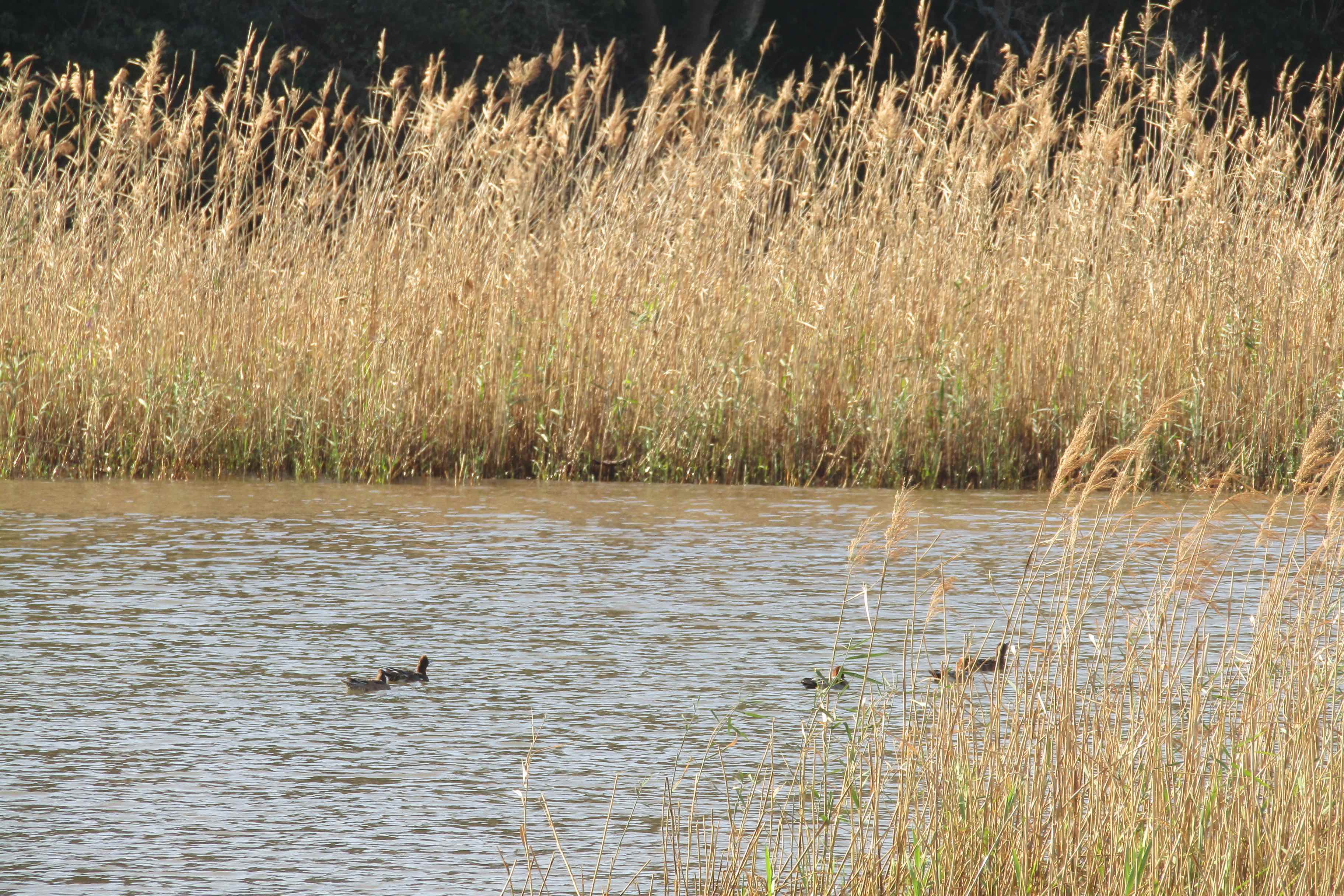
Once you reach the top of the hill, the view opens up and you can see Mount Fuji beyond the vast fields!
Hmm? It's a bit hazy, so it's hard to see in the picture...
But don't worry. As it gets colder, the air will become clearer, so the chances of seeing Mt. Fuji perfectly will definitely increase. The Mt. Fuji you encounter in Miura will look surprisingly large and majestic, so don't be surprised if it suddenly appears!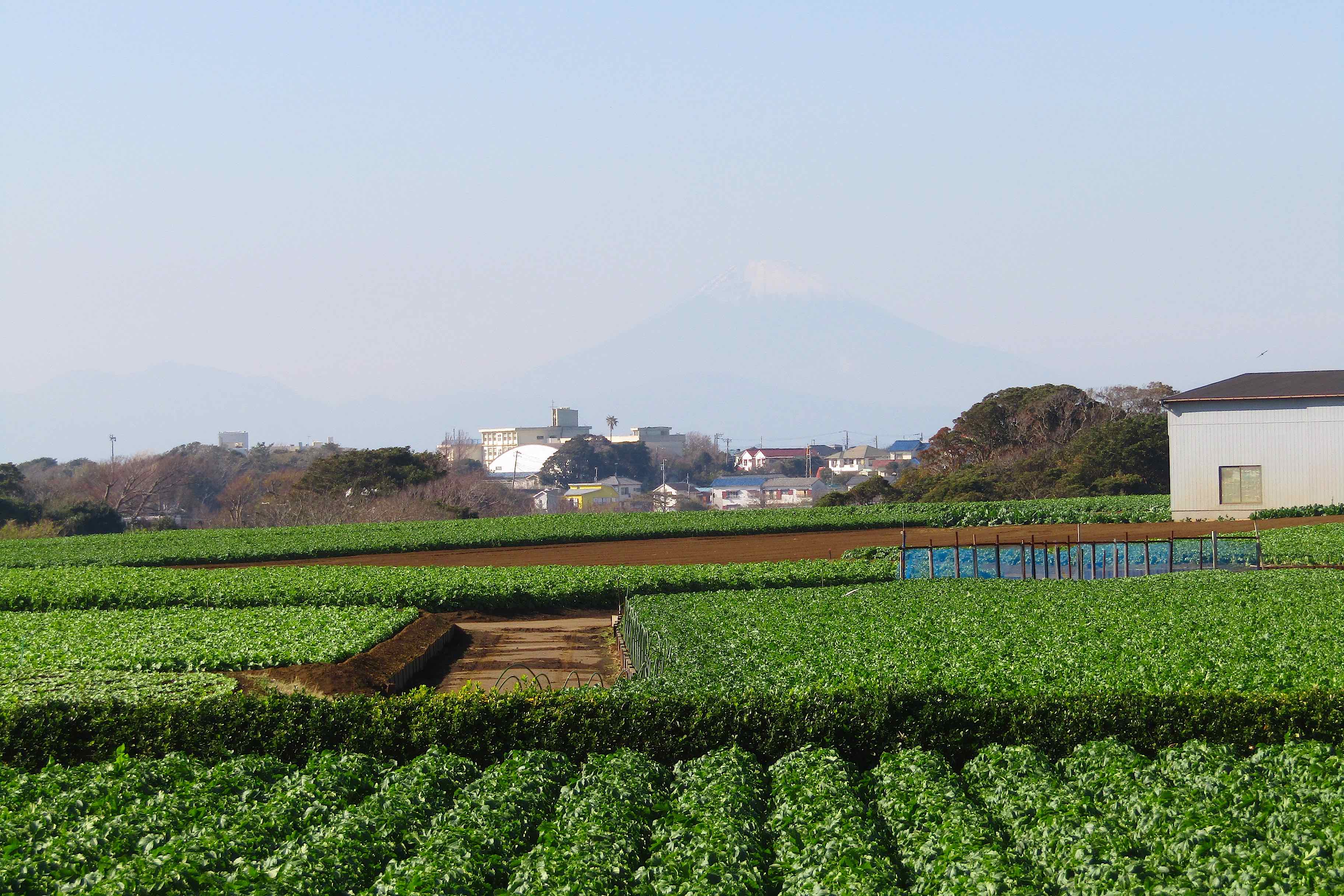
One of the attractions of the scenery at the southern tip of the Miura Peninsula is the vastness of the sky.
This is near the "Tsurugizaki" bus stop. Beyond the endless radish fields, on a clear day, you can see all the way across Tokyo Bay to the Boso Peninsula.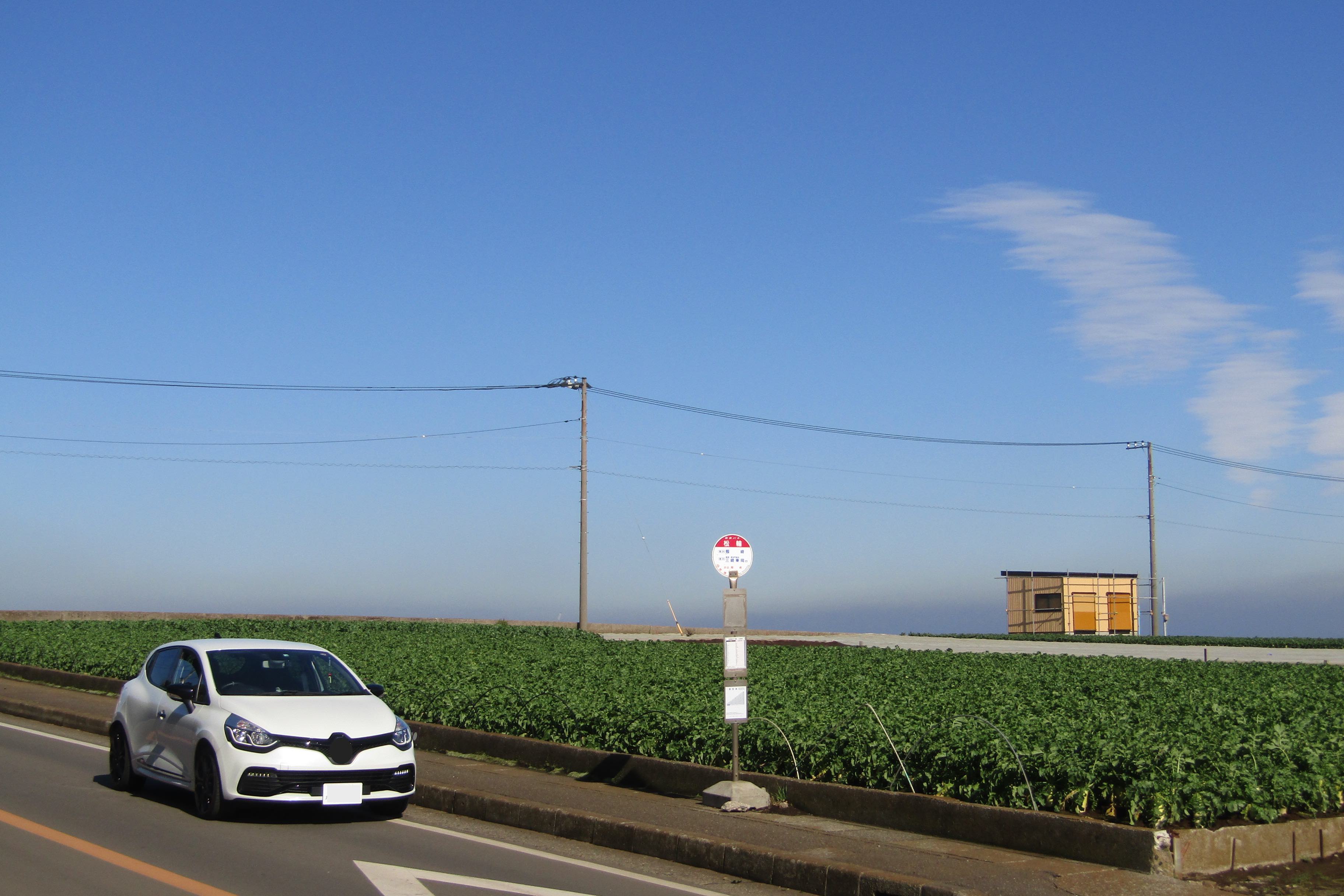
Once you go down the steep slope under Jogashima Bridge, Misaki Fishing Port is just around the corner.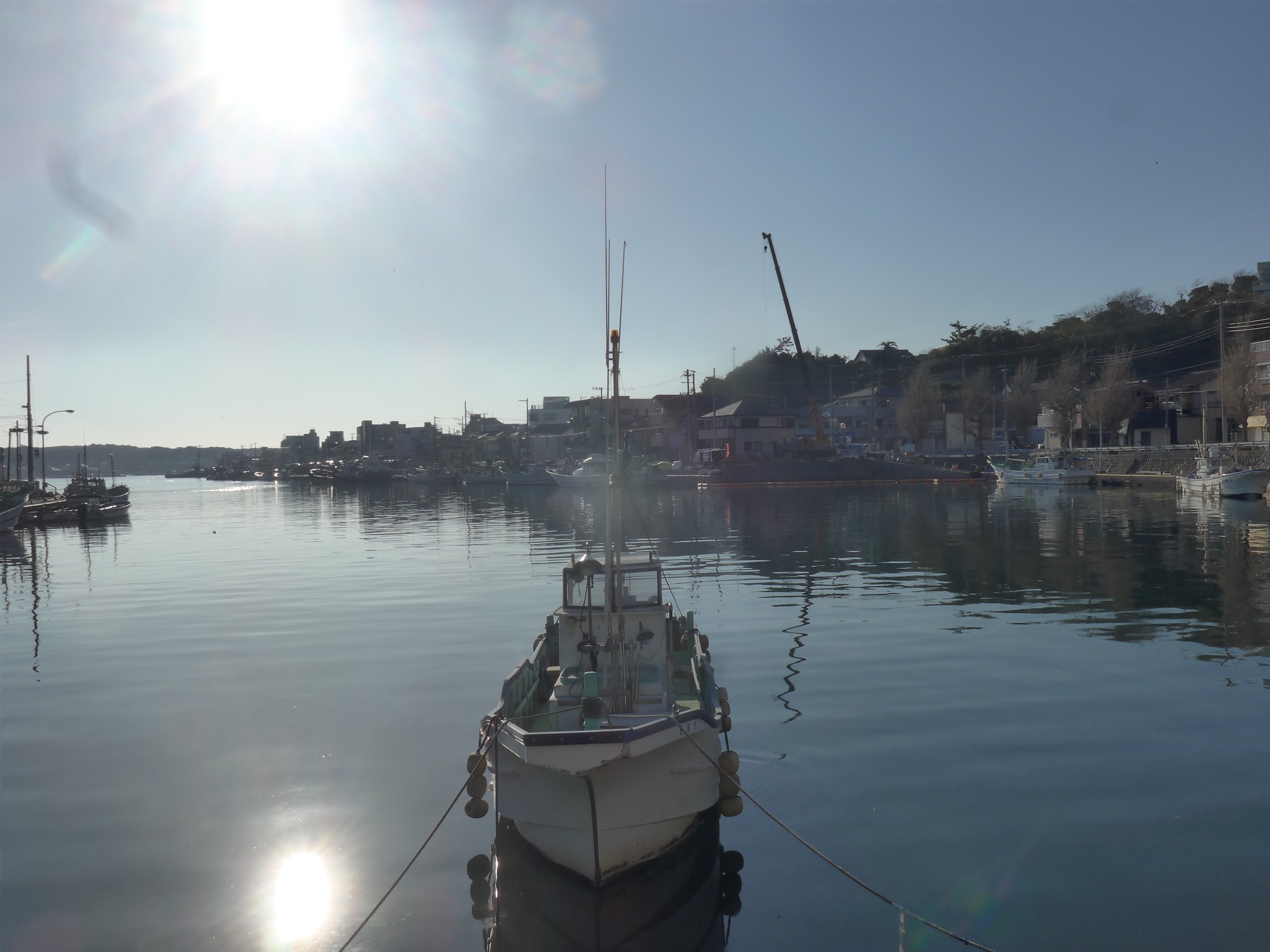
When you arrive at Misaki Fishing Port, the first thing you should do is fill your stomach.
Misaki boasts one of the largest tuna catches in Japan, so there are many restaurants where you can enjoy delicious tuna dishes. After much deliberation, I decided to go to the Fish Market Restaurant in the Misaki Fisheries Local Wholesale Market in Miura City.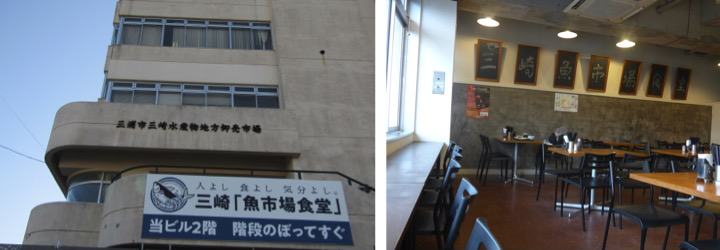
This restaurant is located on the second floor of the wholesale market, so you can enjoy freshly procured and freshly cut fish. Of course, you can also enjoy fresh seafood other than tuna.
First up is the classic "Marinated Tuna Red Meat Rice Bowl" (1,430 yen). This is a hearty meal topped with plenty of tuna red meat marinated in a specially made aged sauce, and comes with crab miso soup.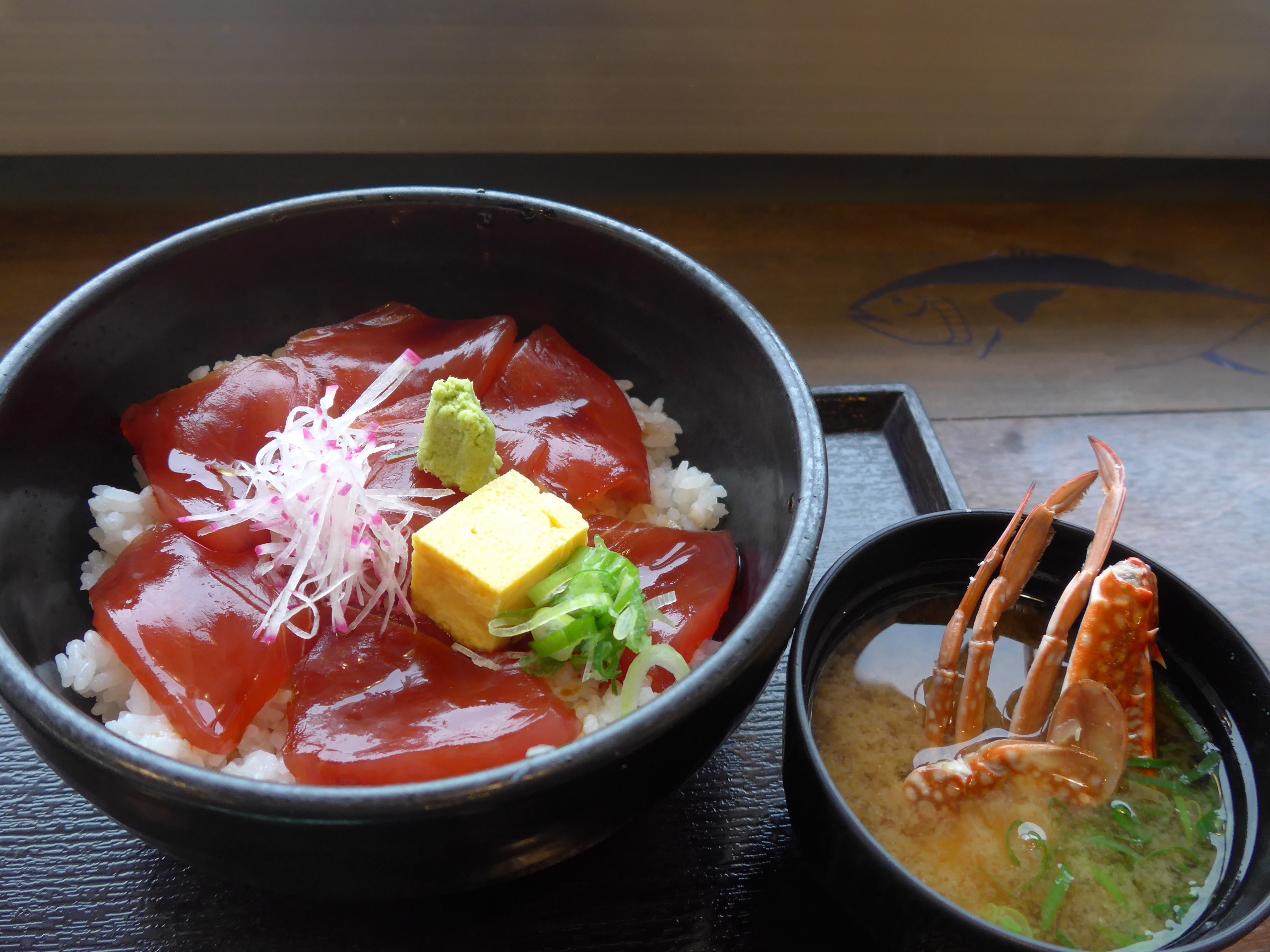
If you're feeling a little greedy, we recommend the "Daily Sashimi and Grilled Fish Set Meal" (1,650 yen). The grilled fish on this day was salt-grilled tuna collar. It was very filling and filling!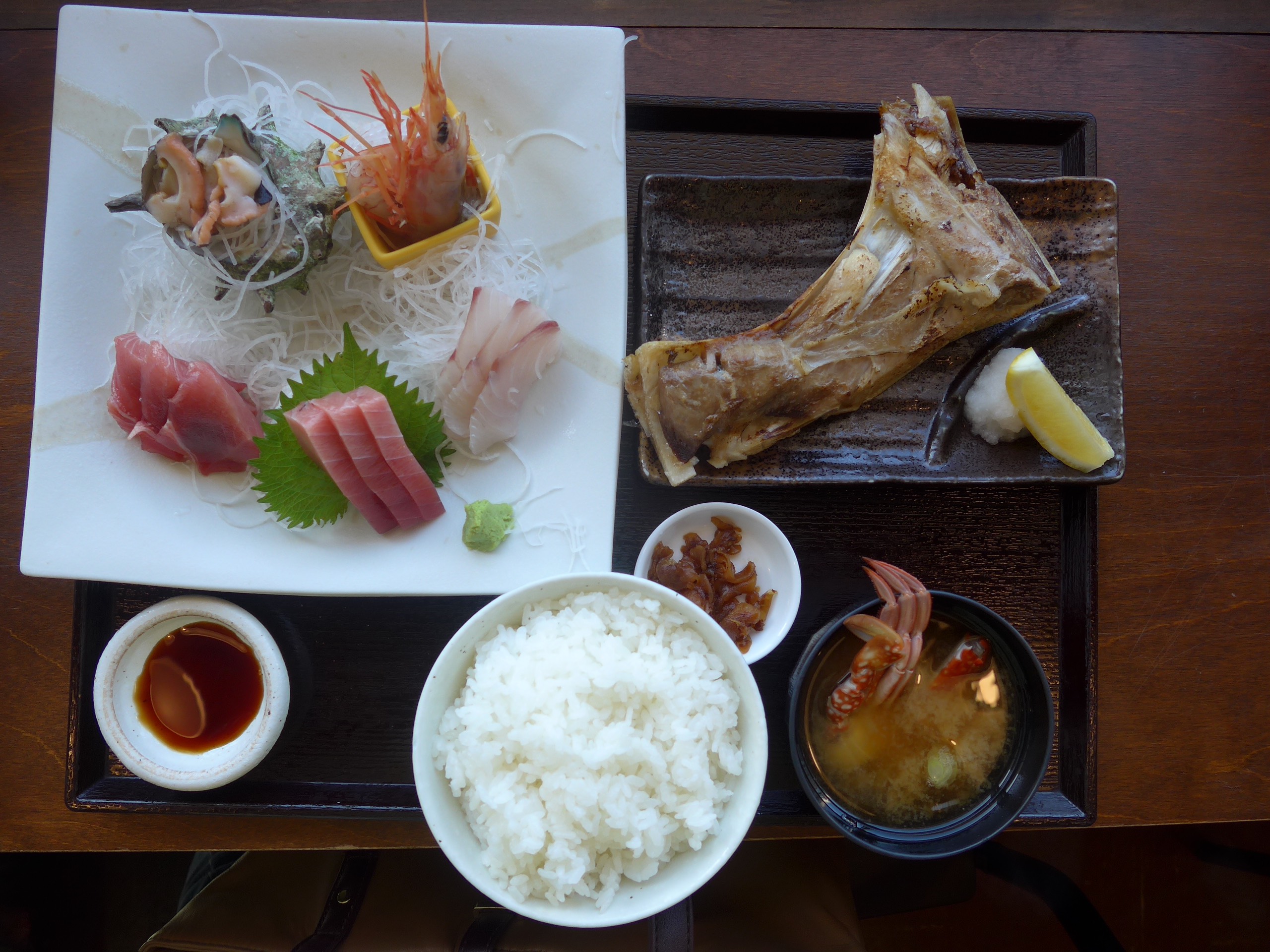
"Misaki Fish Market Restaurant"
[Business hours] Weekdays 6:00-15:00 (last orders 14:30), Saturdays and holidays 6:00-16:00 (last orders 15:30), Sundays 5:00-16:00 (last orders 15:30) *Closed between 10:00-11:00 for preparation
[Closed] Wednesday
[Address] 2nd floor, Misaki Fisheries Local Wholesale Market, 5-245-7, Misaki, Miura City
[TEL] 046-876-6022
From here, I parked my car in a public parking lot and took a walk around the town of Misaki.
You can explore the area at your own pace on foot, but with the ambition of crossing the Jogashima Bridge in mind, I decided to rent a bicycle. The reception is located on the port side of the Urari Marche, next to the public parking lot.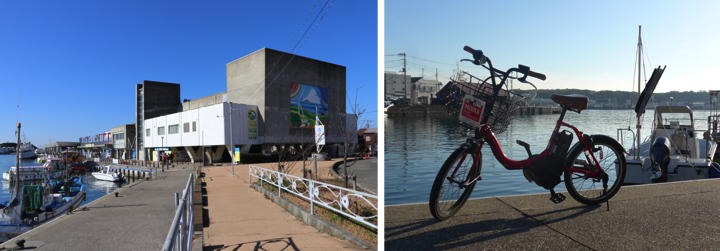
In addition to Urari Marche, Miura Bicycle Rental also has ports at Misakiguchi Station, Miura Kaigan Station, Jogashima, and Aburatsubo, so you can drop the bike off at any time, making it very convenient. Because it is an electric-assist bicycle, it is easy to climb hills.
*Advance reservations are recommended on holidays.
《Miura Bicycle Rental/Urari Port》
[Business hours] 9:00-17:00
[Closing days] Open all year round
[Address] 5-3-1 Misaki, Miura City, Urari Marche
[Telephone number] 046-881-6721
[Fee] 1 day use: 1,600 yen, 3 hour use: 900 yen, extension fee: 300 yen (per hour), drop-off fee: 500 yen
First, we will visit Kainan Shrine. This is a historic shrine that is said to have been founded in the early Heian period, and within the shrine grounds is a large 800-year-old ginkgo tree that is said to have been hand-planted by Minamoto no Yoritomo.
There is a saying that 'Hainan' means 'difficulty', and it seems that many people visit the temple hoping for blessings for academic success and passing exams.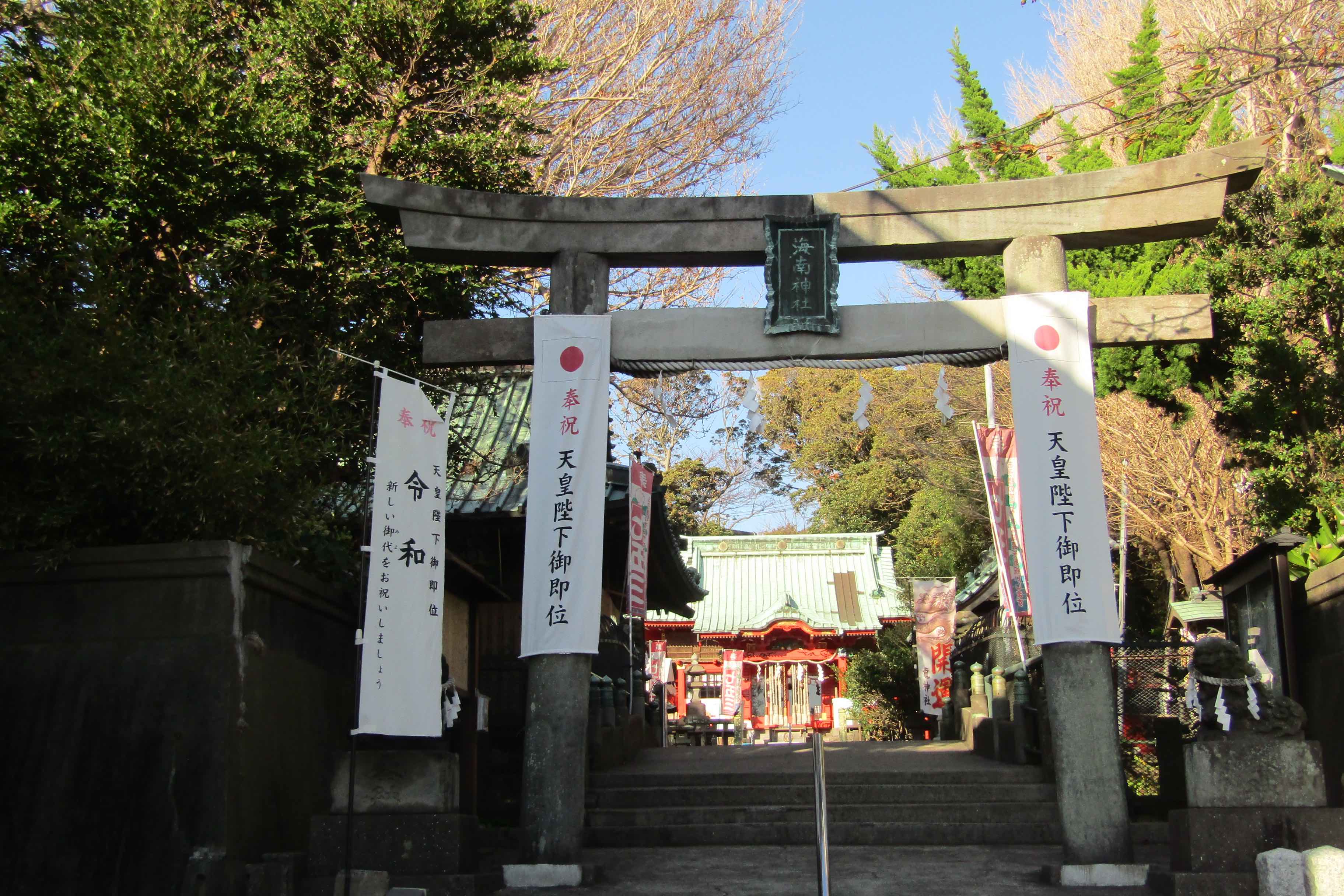
I found a "Misaki Tuna Fortune" in front of the main shrine!
The idea is to catch a tuna using a toy fishing rod, and the initial fee is 300 yen. The tuna paper mache makes a perfect souvenir.
By the way, the fortune slip I caught was "Great Fortune."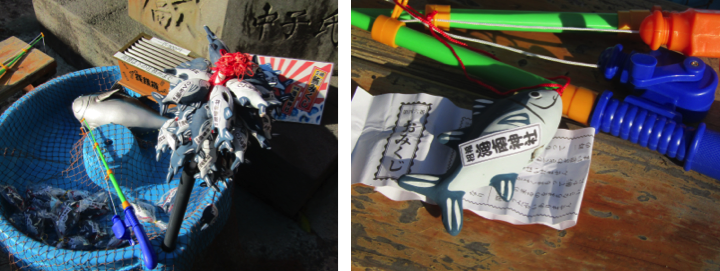
"Hainan Shrine"
[Address] 4-12-11 Misaki, Miura City
[TEL] 046-881-3038
After praying, we stopped by Chakkirako Misaki Showakan in the downtown area.
Utilizing a storehouse-style merchant's house that has been in operation since the end of the Edo period, the museum exhibits materials related to Misaki's traditional performing art "Chakkirako" as well as nostalgic scenes of life in the Showa era.
The exhibits change with the seasons, but the museum is filled with everyday items that will bring back fond memories for some generations, such as cathode ray tube televisions and low tables, while being fresh and new for younger generations.
"Chakkirako: Misaki Showa Museum"
[Opening hours] 10:00-16:00
[Closed days] Wednesdays and Thursdays
[Fee] Free
[Address] 2-11-3 Misaki, Miura City
[TEL] 046-882-3156
After a leisurely ride through Misaki's downtown area, you'll climb a steep hill and head towards Jogashima.
The Jogashima Bridge to Jogashima requires a toll for cars, but is free for bicycles and pedestrians. What's more, you get the added bonus of being able to leisurely enjoy the spectacular view from the bridge!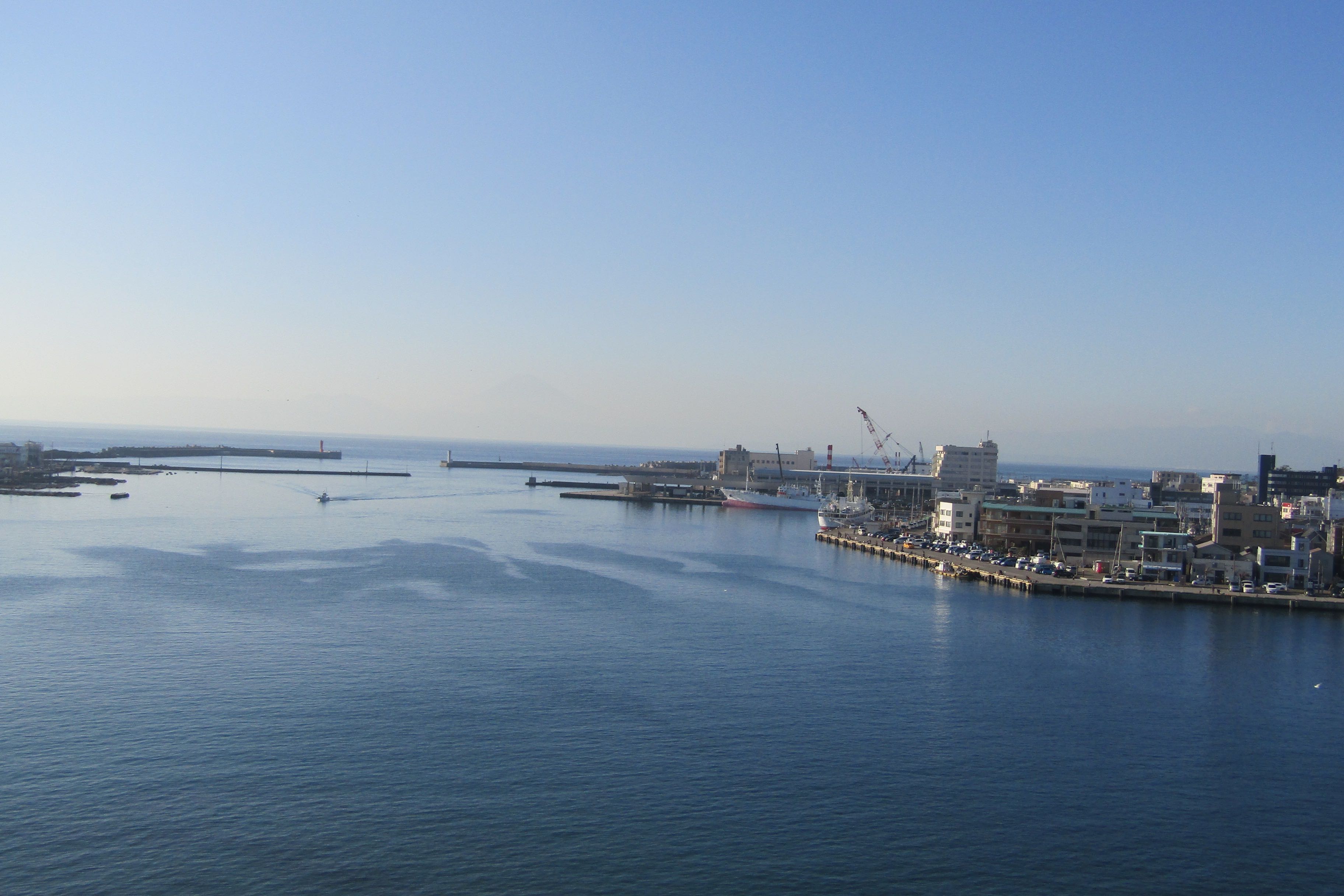
It was hazy at this time of day too, so unfortunately it's not visible in the image, but Mount Fuji could be seen beyond Misaki Wholesale Market.
Once you have crossed the bridge, head straight down the hill and visit the Hakushu Memorial Museum at the foot of the bridge.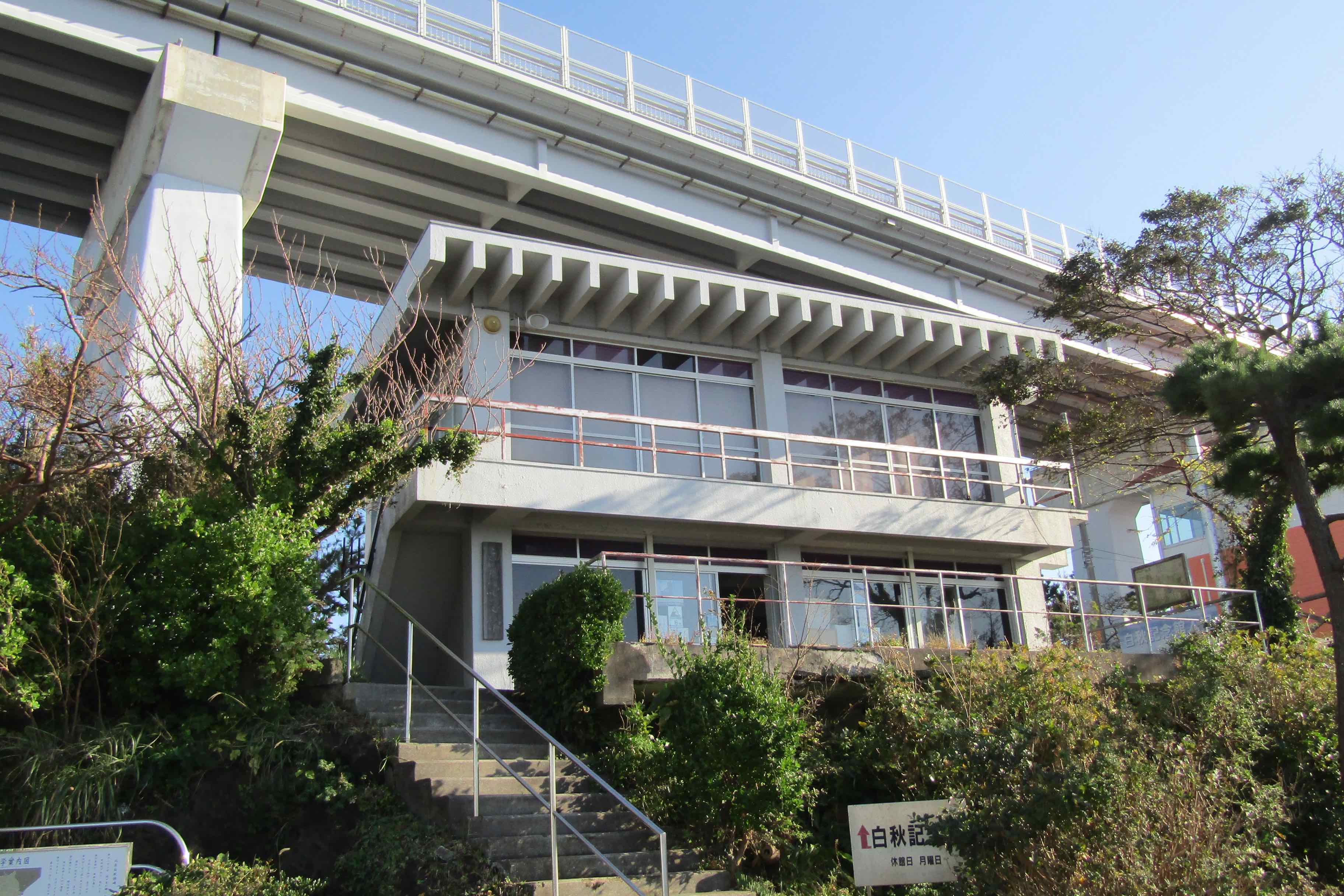
Kitahara Hakushu, a poet known for writing lyrics such as "Machibouke," moved to Misaki at the age of 27. Although he only stayed for about 10 months, the Misaki climate seems to have permeated Hakushu's heart with warmth.
A verse from "The Rain of Jogashima" is inscribed in Hakushu's own handwriting on the monument that stands beneath the Hakushu Memorial Museum. There are more than 60 monuments to Hakushu's poems across the country, but it is said that this and Kenmoji Temple (Shiraishi-cho, Miura City) are the only two places where Hakushu gave permission for monuments to be erected during his lifetime and wrote the inscription himself.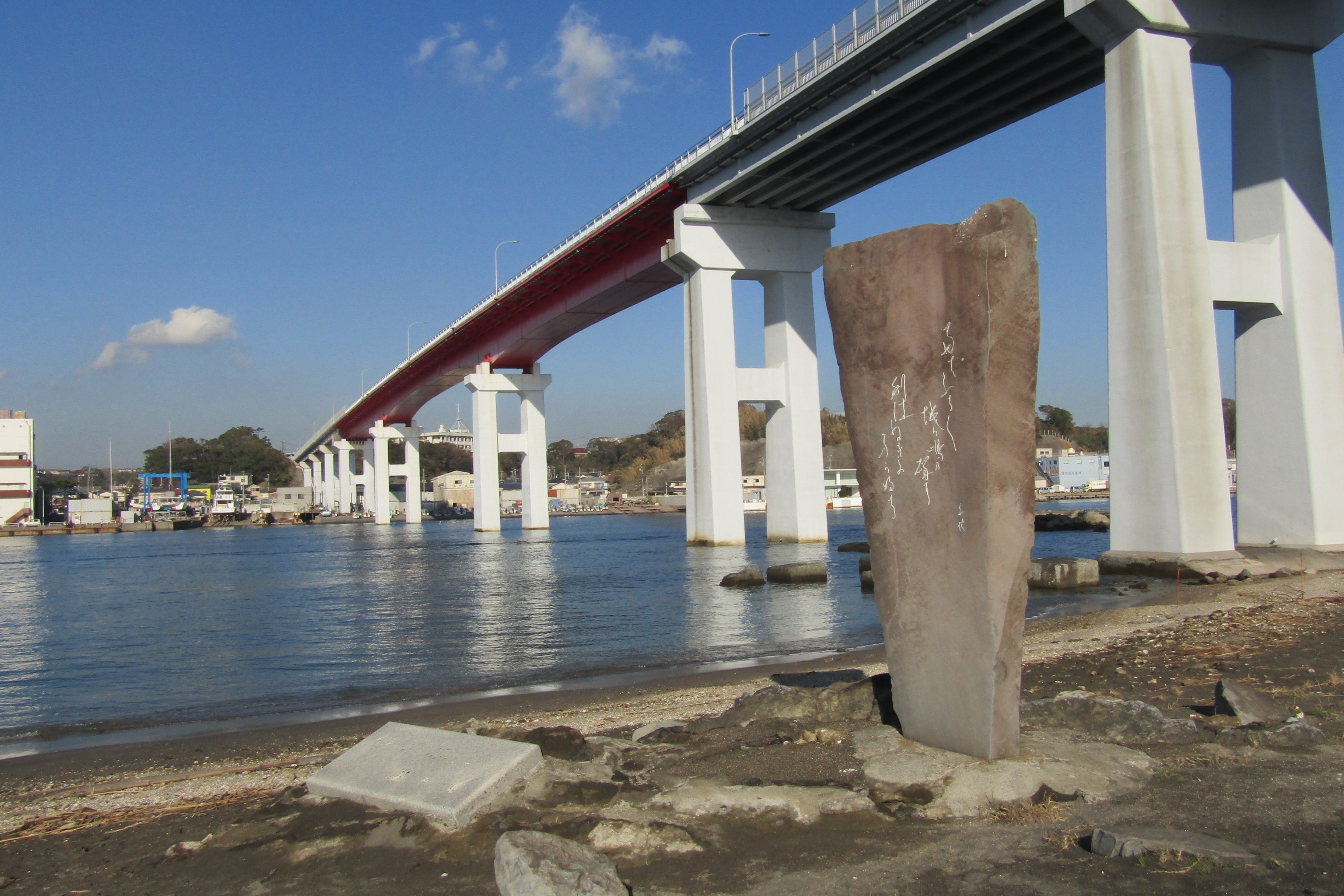
Hakushu Memorial Museum
[Opening hours] 10:00-16:00
[Regular holidays] Mondays (or the following day if Monday is a public holiday), New Year's holidays, and other days determined by the Miura City Board of Education
[Fee] Free
[Address] 374 Jogashima, Miura City
[TEL] 046-881-6414
If you get tired from going back and forth to Jogashima Bridge, take a break at Misaki Donuts in Misaki Ginza Street Shopping Arcade.
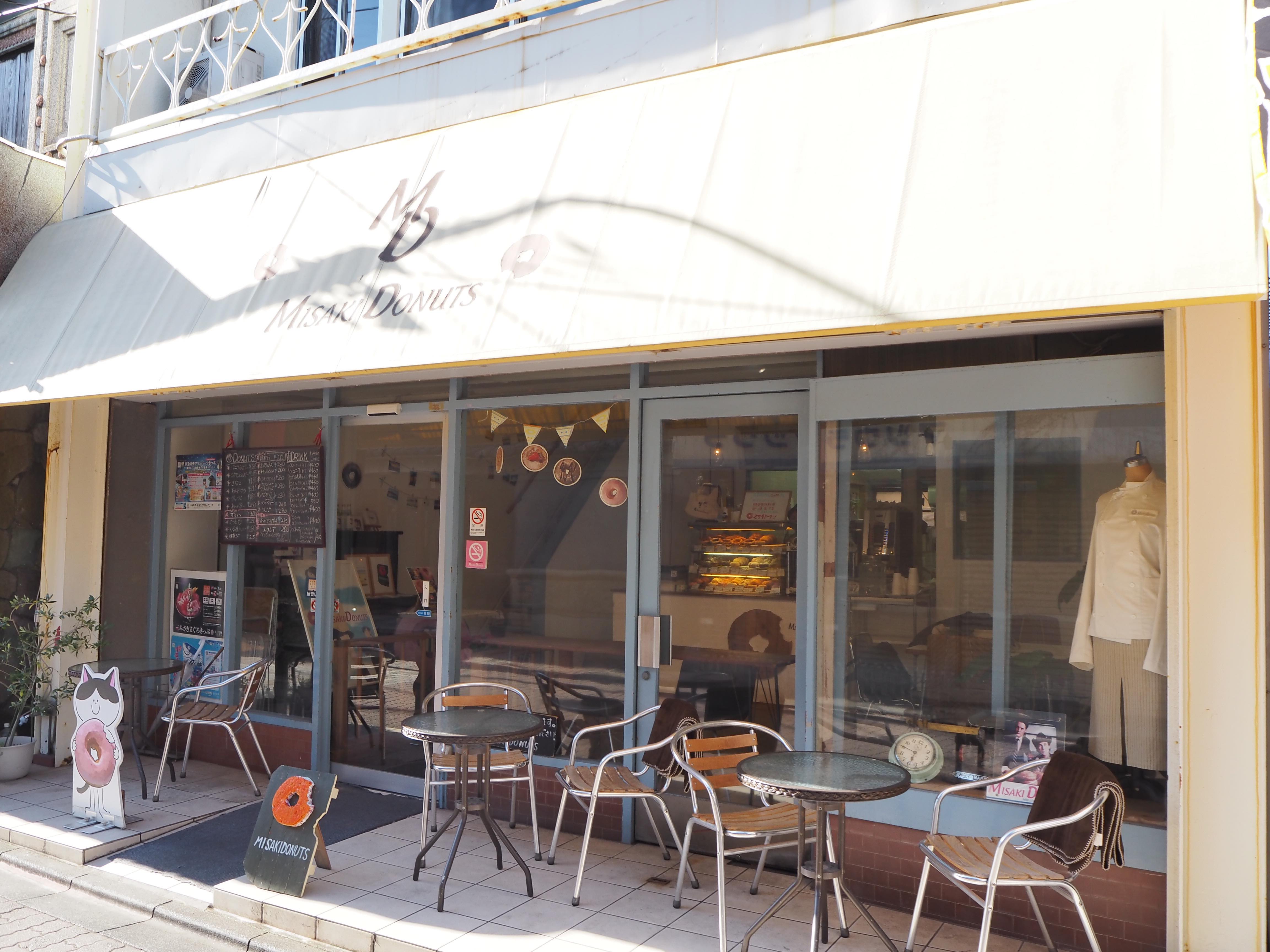
It has now become a popular restaurant with branches in Zushi, Kamakura, and Hayama, but its main store is, of course, in Misaki.
 The display case features over 20 different kinds of donuts, including daily and seasonal limited editions! The dough, made from flour, eggs, and soy milk, and the fillings are all handmade. The soft and fluffy texture created using bread-making techniques will fill you with happiness with every bite.
The display case features over 20 different kinds of donuts, including daily and seasonal limited editions! The dough, made from flour, eggs, and soy milk, and the fillings are all handmade. The soft and fluffy texture created using bread-making techniques will fill you with happiness with every bite.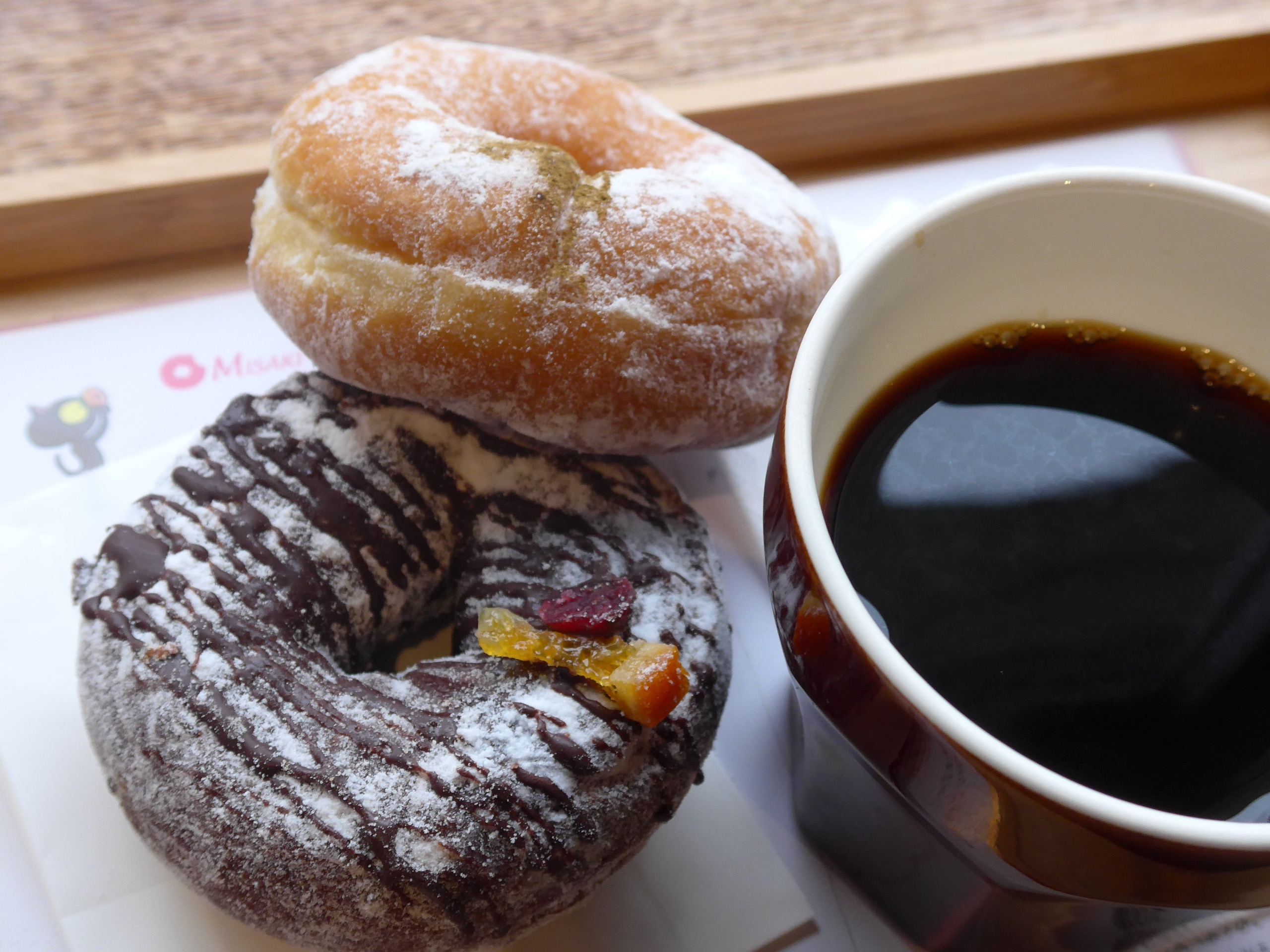
The shop is a renovated 80-year-old traditional house, and has a very relaxing atmosphere. There are also large tables on the second floor, so it's perfect for a relaxing cafe time.

《Misaki Donuts Misaki Main Branch》
[Business hours] Weekdays 11:00-17:00 / Saturdays, Sundays and holidays 10:00-18:00
[Regular holiday] Wednesdays *Excluding busy periods such as spring break, Golden Week, summer vacation, and New Year's holidays
[Address] 3-3-4 Misaki, Miura City
[TEL] 046-895-2410
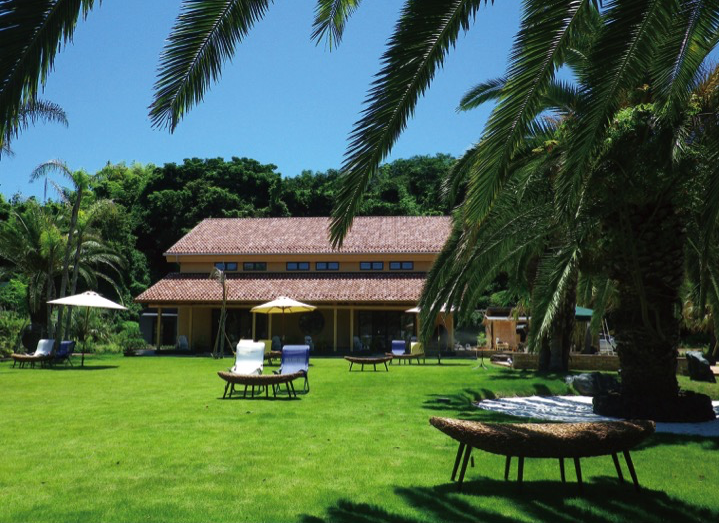
With a resort-like expanse of lawn, tropical trees, and exotic buildings, Kaze Kobo is a resort craft facility where you can experience a variety of crafts, including pottery, glass crafts, and plant dyeing.
Basically, you are free to visit the workshops. On weekends, each studio holds a one-day trial lesson, so why not find a craft that interests you and head out to try it out?
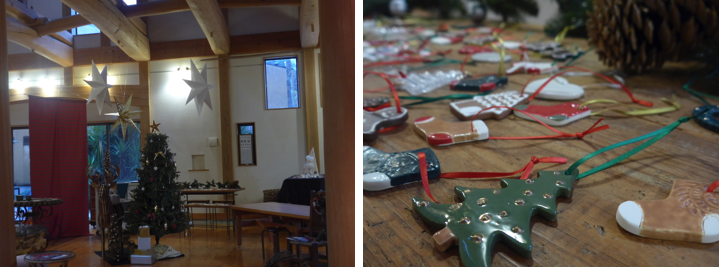
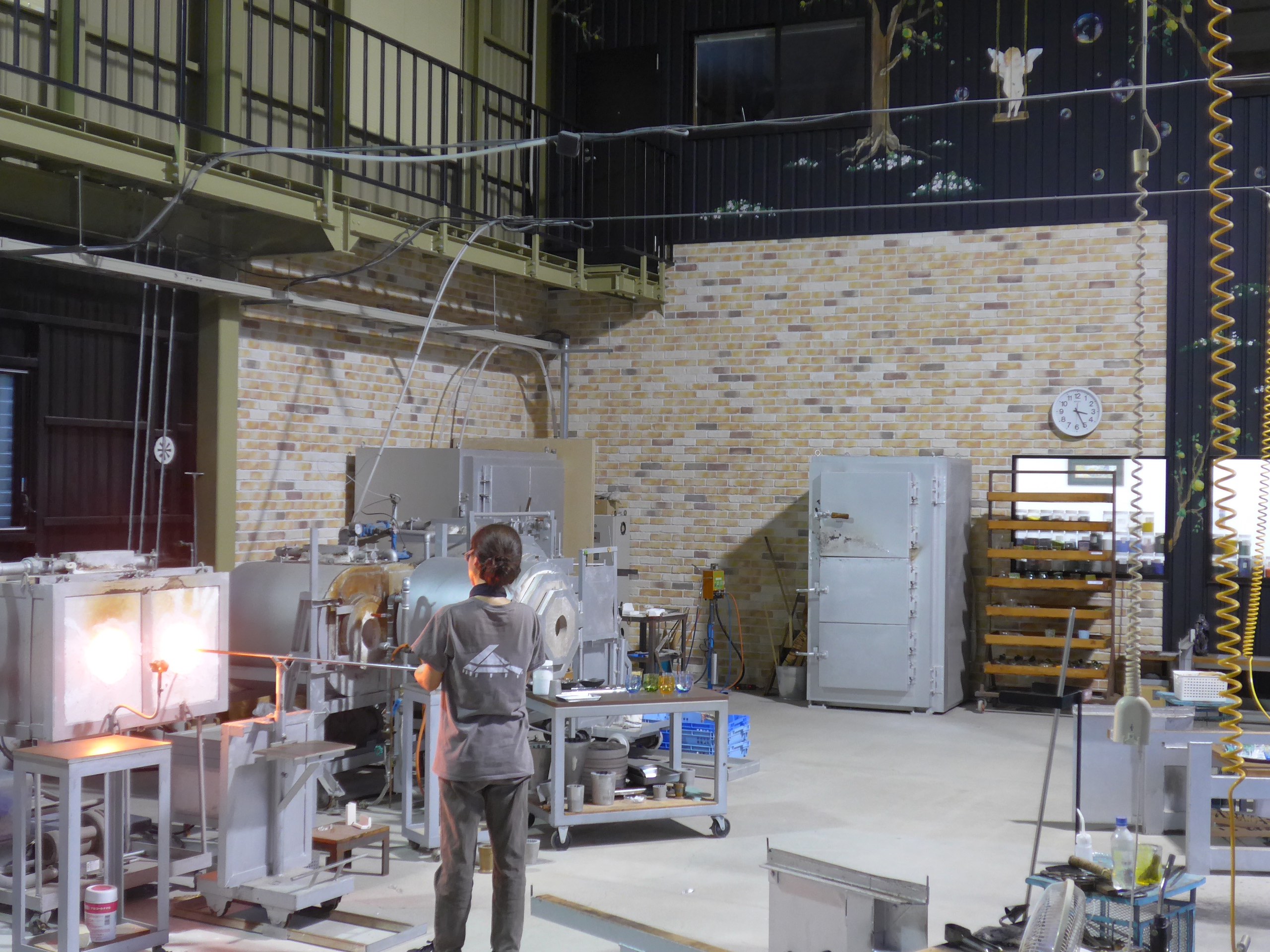 This is a glass workshop. In the one-day experience, you can experience glass blowing, sandblasting, glass beads, etc. (Reservation required)
This is a glass workshop. In the one-day experience, you can experience glass blowing, sandblasting, glass beads, etc. (Reservation required)
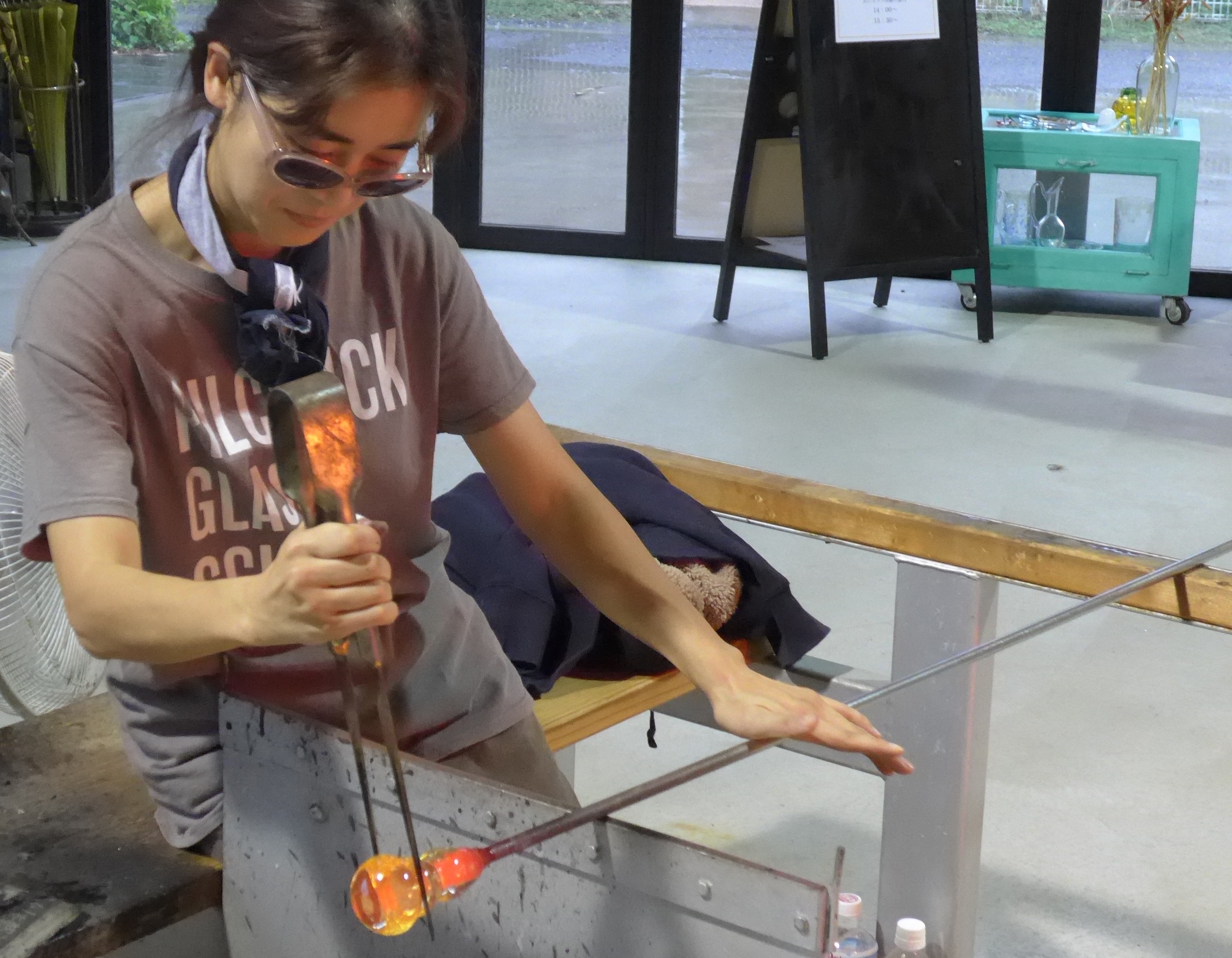
At the pottery studio, you can experience both pottery on the wheel and hand-forming (reservations required).
On the day we visited, the teacher was kneading the clay. It is a physically demanding task, so for the one-day trial class, the teacher will prepare the clay that has already been kneaded.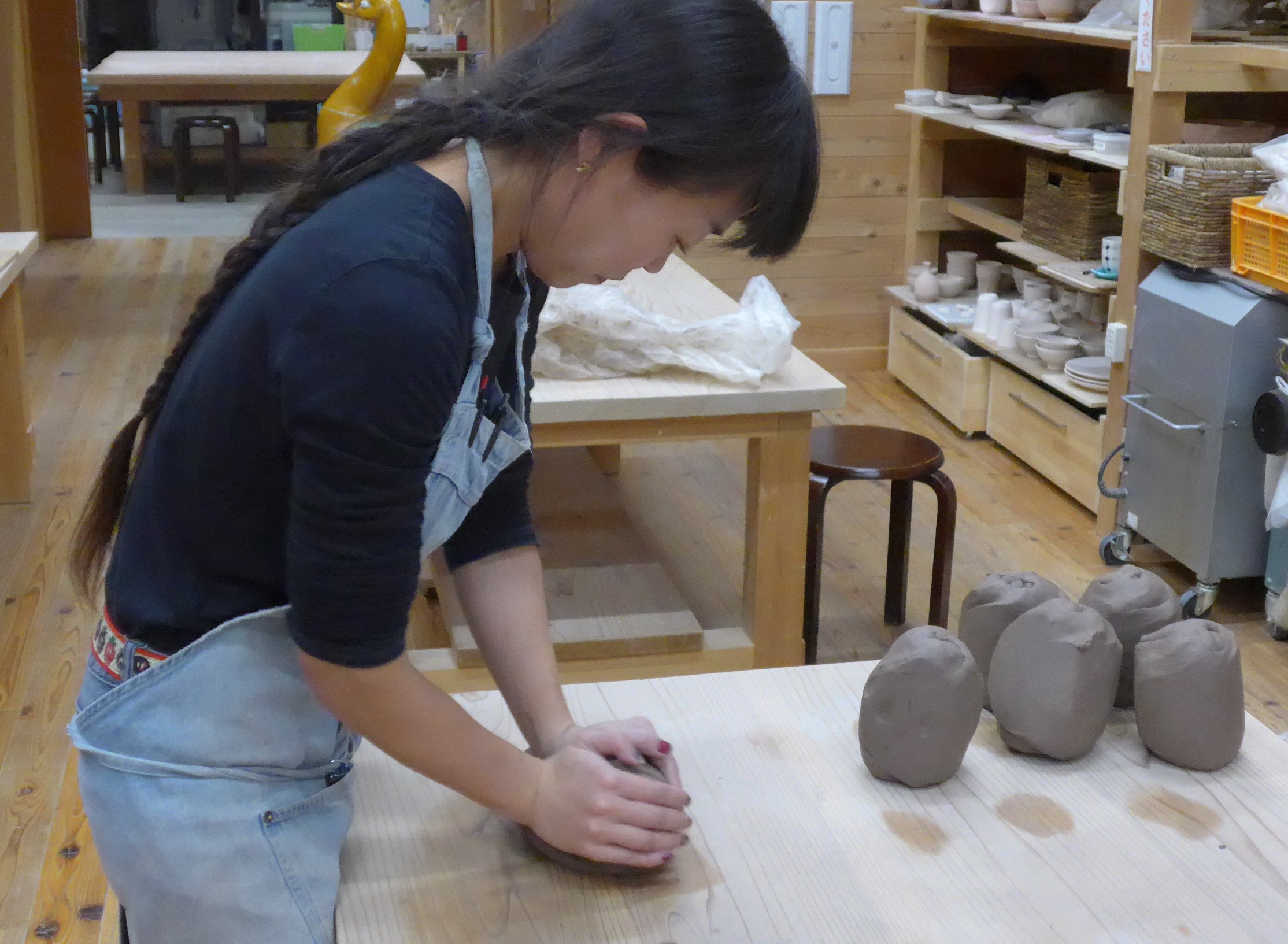
Wind Workshop
[Business hours] 10:00-17:00
[Regular holidays] Tuesdays and Wednesdays (open on public holidays)
[Address] 1893 Misakicho, Miura City
[TEL] 046-874-5617
The sun is about to set, so let's hurry to the next spot.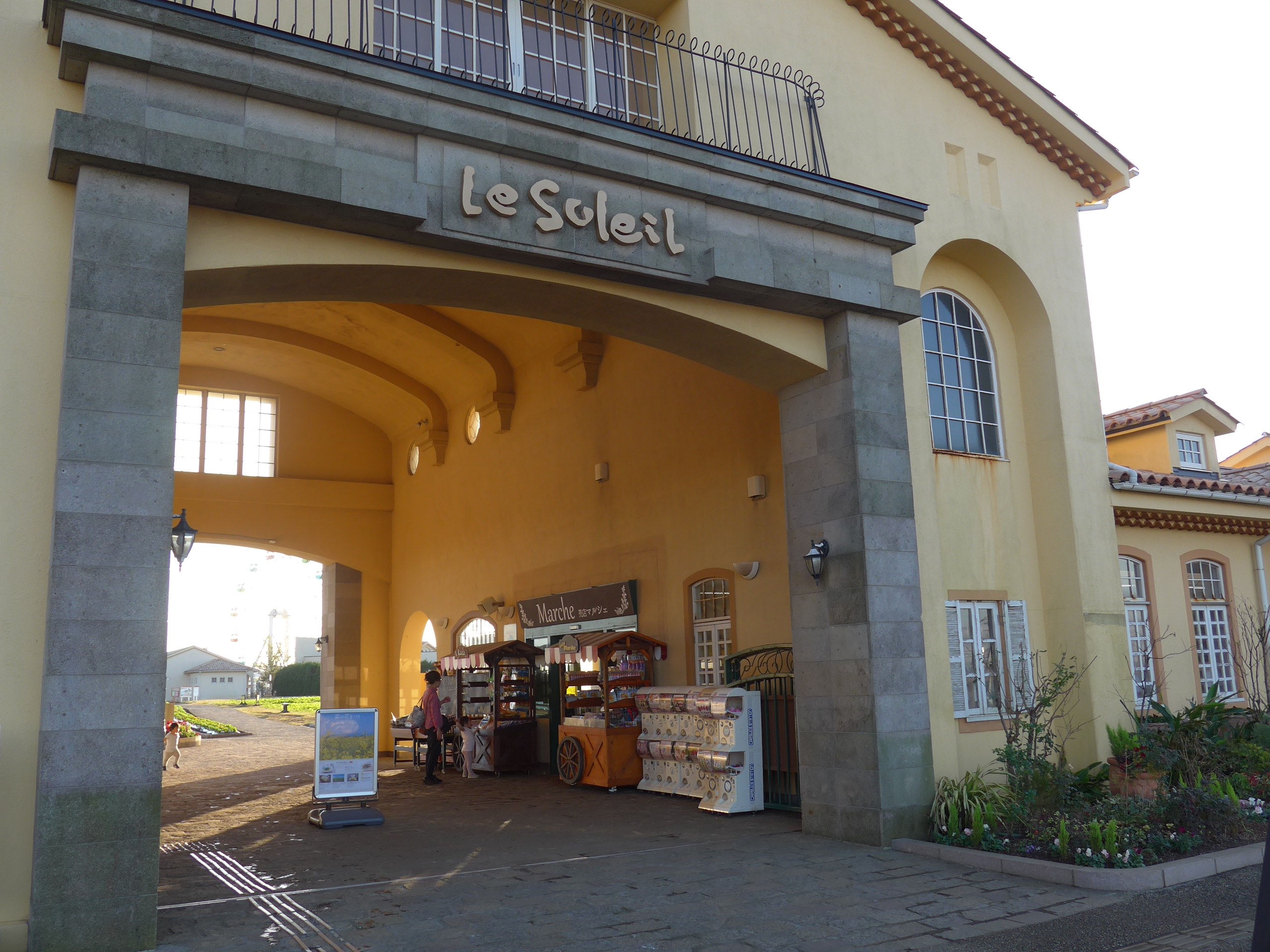
The last place we visited that day was Soleil Hill in Nagai Seaside Park.
The vast grounds are packed with a variety of attractions, including go-karts and a Ferris wheel, events using the water stage, craft experience classes, and more, as well as a farm where you can try harvesting, a barbecue area, an auto camping site, restaurants, and more. It's a place that everyone from children to adults, families, couples, and groups can enjoy in whatever way they like.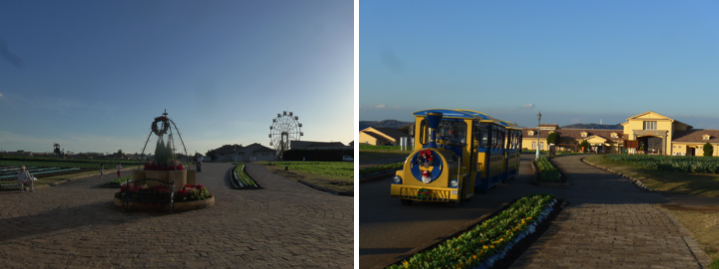
There's so much to do in the park that you can't cover it all in one day, but on this day it was almost dusk. The sun was setting behind the vast hills. But I still wanted to visit because Soleil Hill has a great view at dusk!
The key point is "Hoshimi no Oka" next to the auto campsite. It is the best spot for the day, where you can see Izu Oshima and Mt. Fuji across the majestic sea. Mt. Fuji was not clearly visible due to the haze, but its silhouette in the evening sky was beautiful.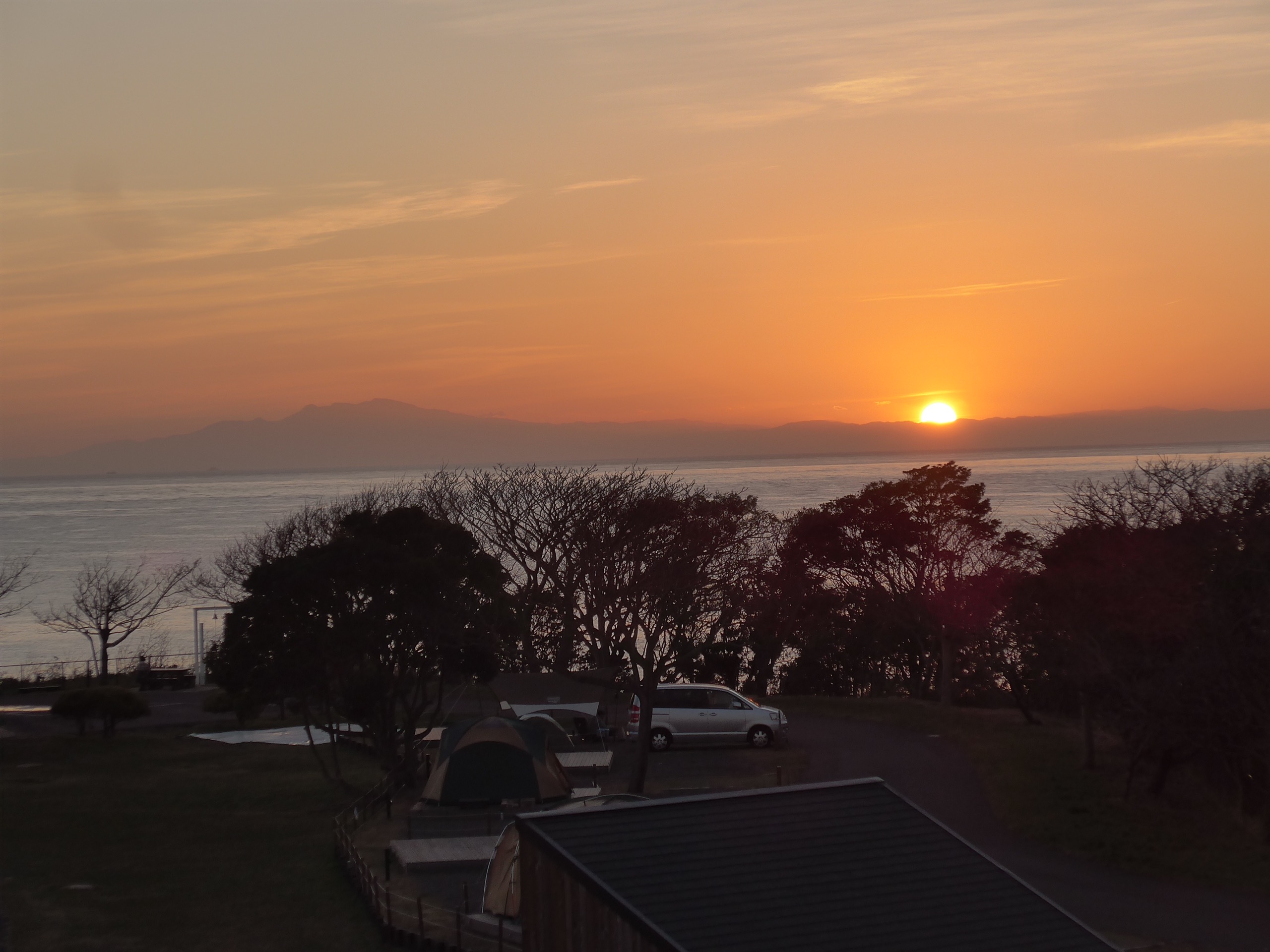
Then, a bright red sun sinks next to Izu Oshima.
From here, it's about 4km and 10 minutes to the Hayashi IC on the Miura Longitudinal Road. I was reminded that it's close and convenient even from Yokohama. Having said that, the delicious smell of barbecue was wafting from the campsite right next to it, so I decided to stay overnight next time.
By the way, there are also bungalows and hot spring facilities, so even those who aren't very good at outdoor activities can rest assured!
*The campsite will be closed for the winter from December 2019 to February 2020, but will be open for special periods. Please check the website for details.
"Soleil Hill"
[Opening hours] (March to November) 9:00-18:00 / (December to February) 9:30-17:00 * Hot spring facility "Umi to Yuhi no Yu" 10:00-21:00 (last entry 20:30)
[Closing days] Open all year round
[Admission fee] Free *Parking fee (1,000 yen for regular cars)
[Address] Nagai 4, Yokosuka City
[TEL] 046-857-2500
